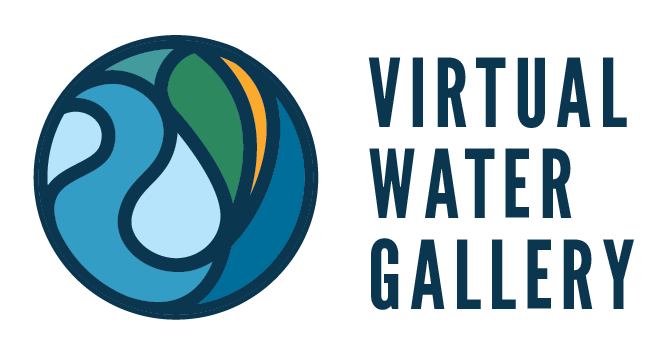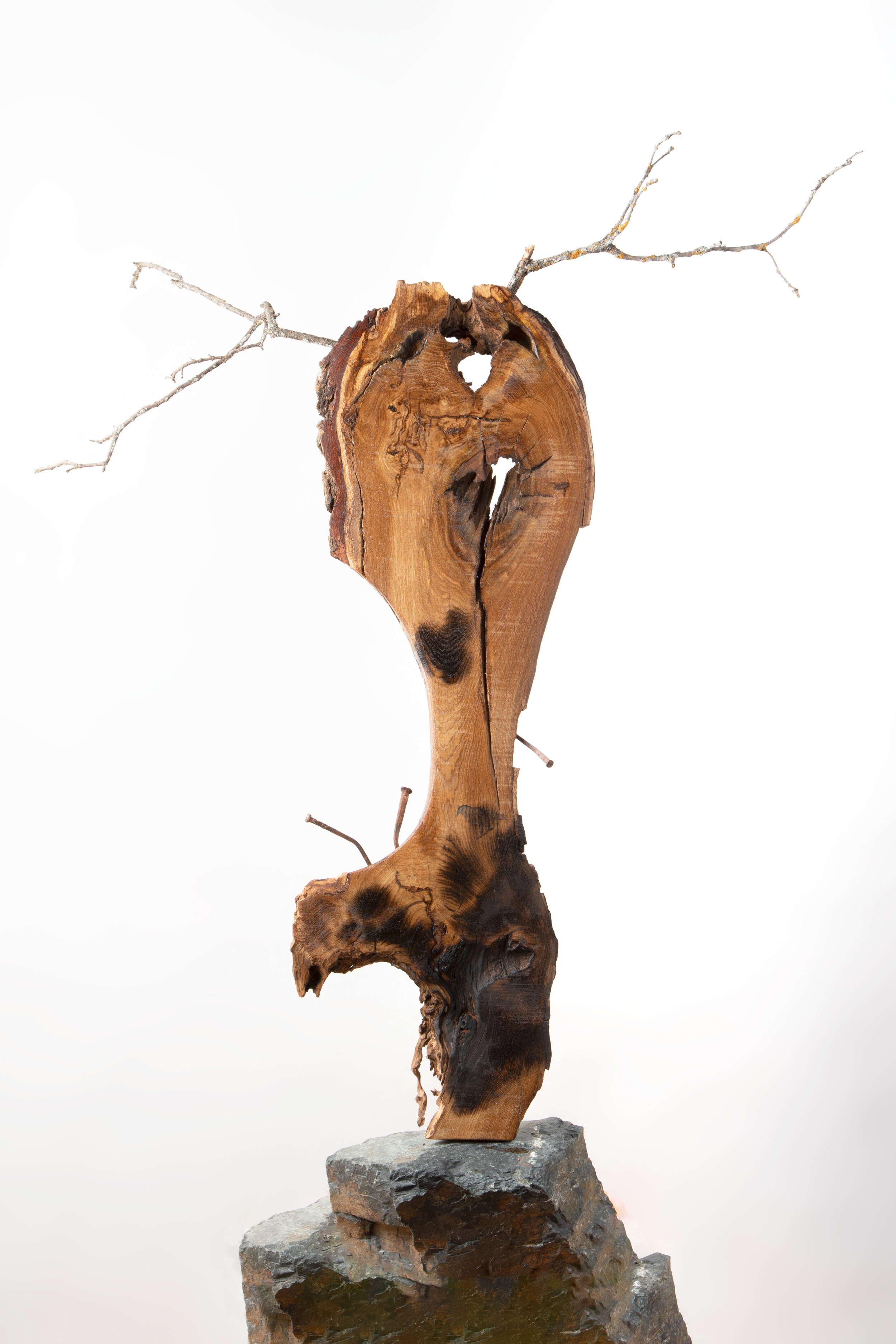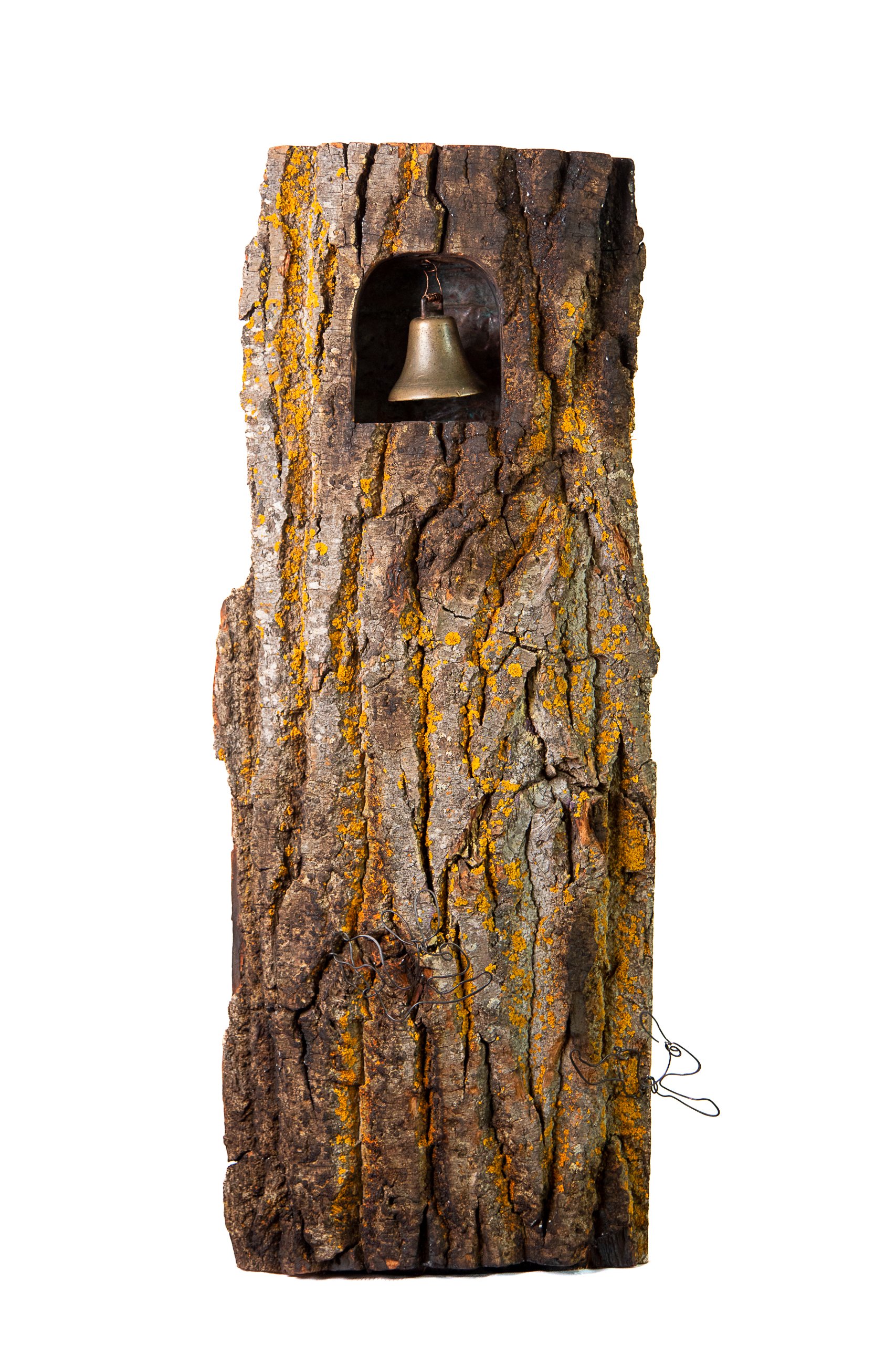
Damaged Shoreline Music
This collaborative project between artist Bob Haverluck and water expert Trish Stadnyk looks at the Nelson River system, draining 1.1 million km2 of Canada’s continental interior. The Nelson River has been subjected to intensifying hydropower development since the 1970’s, impacting the local first nations, the ecosystem, and the natural flow of the river.
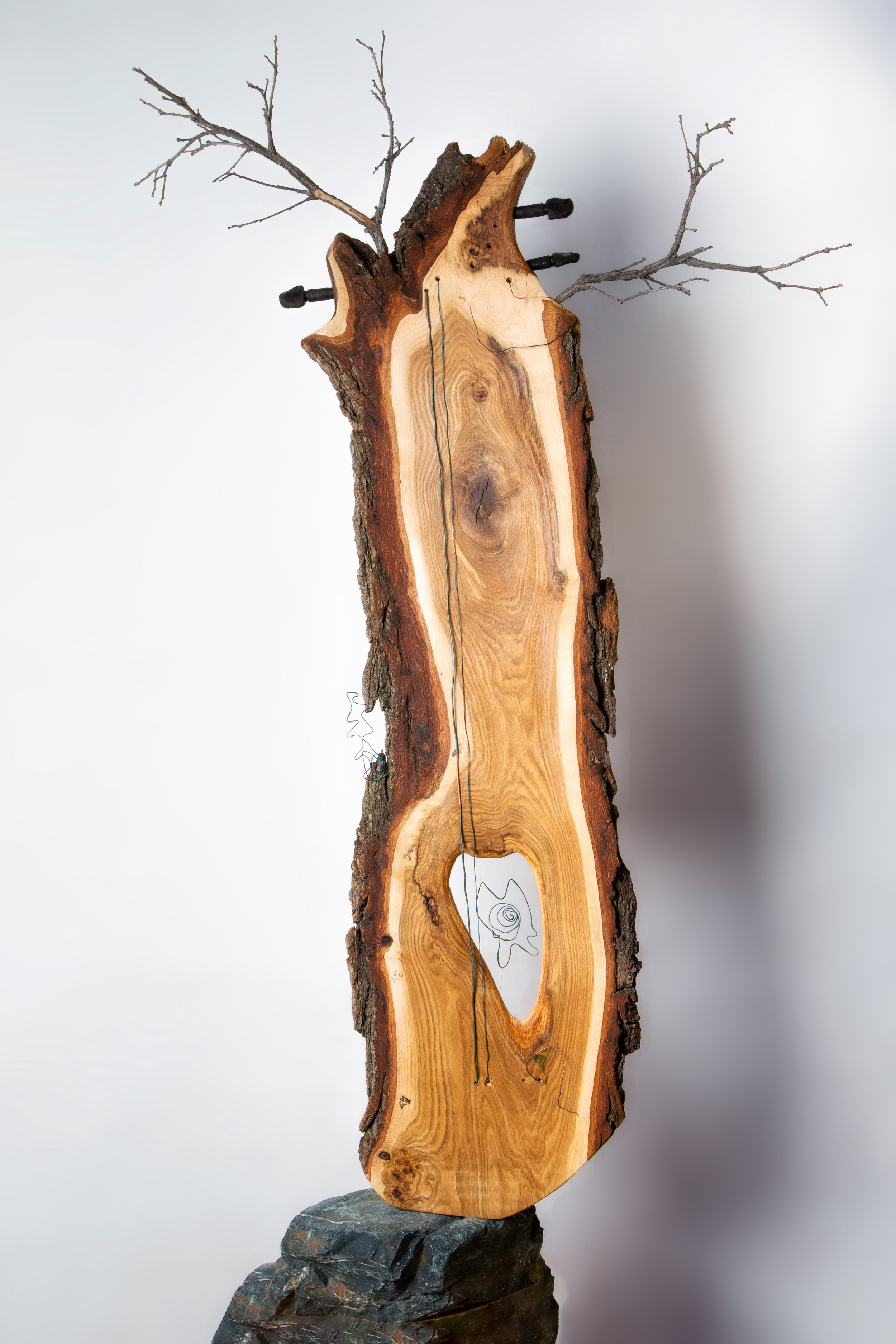
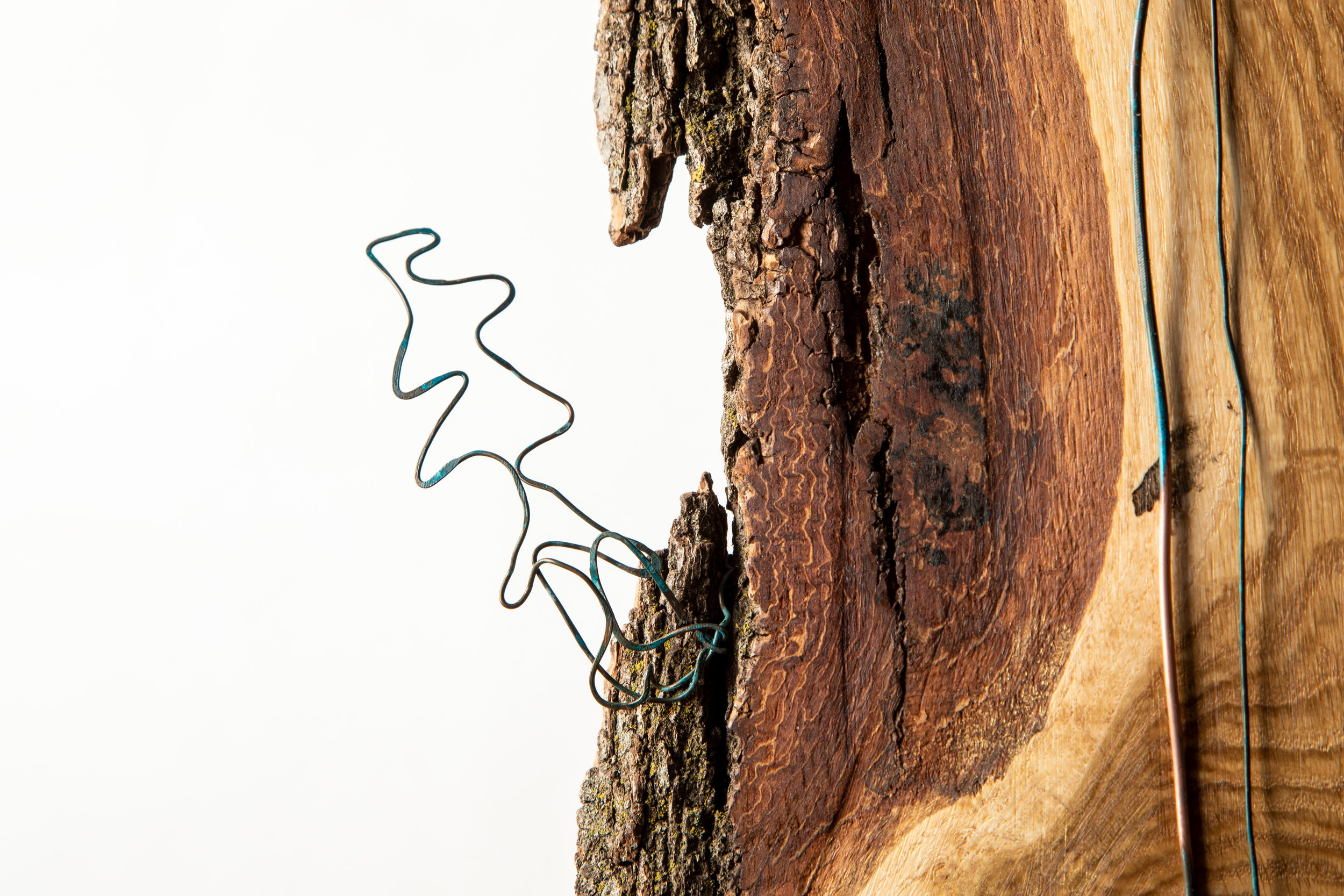
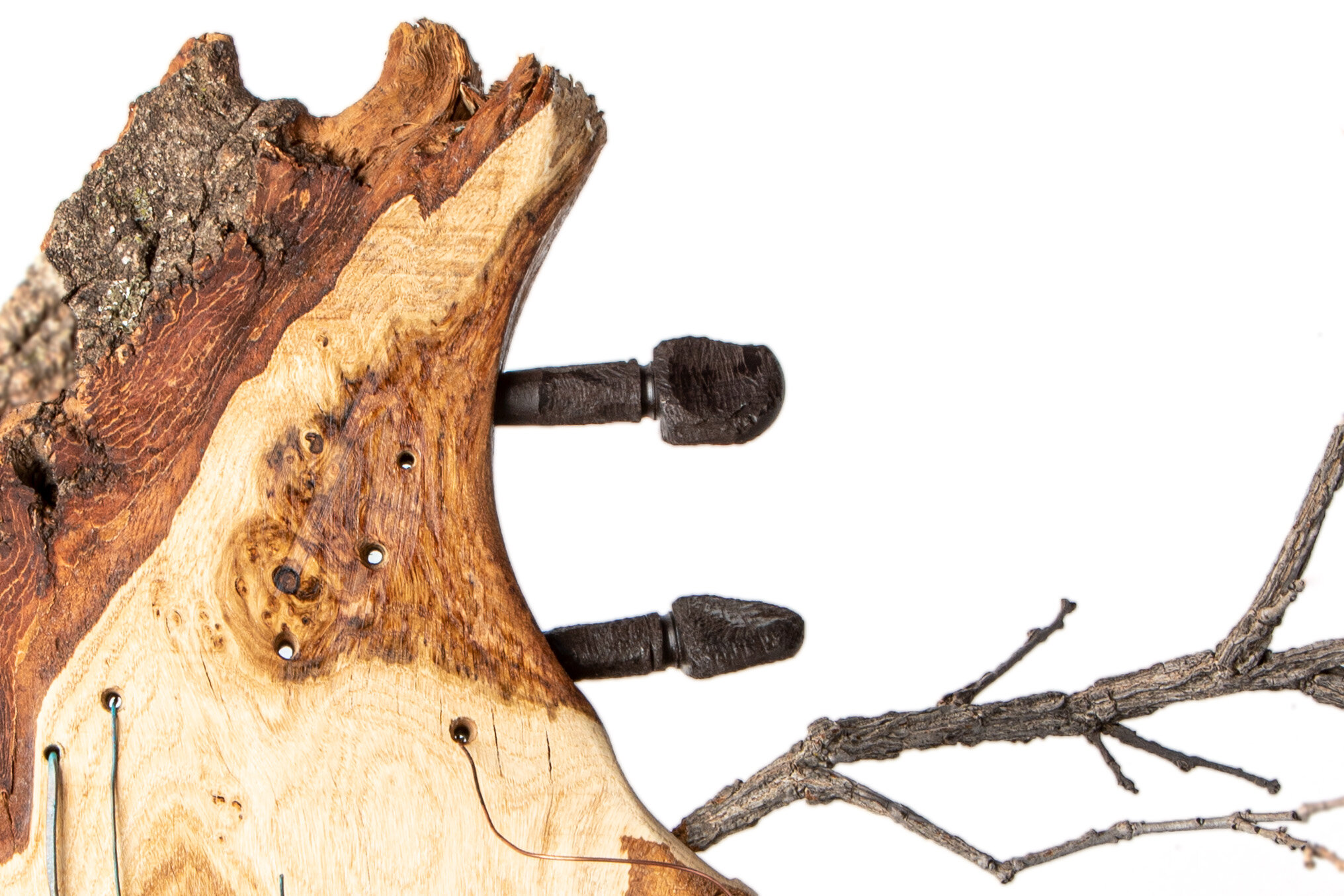
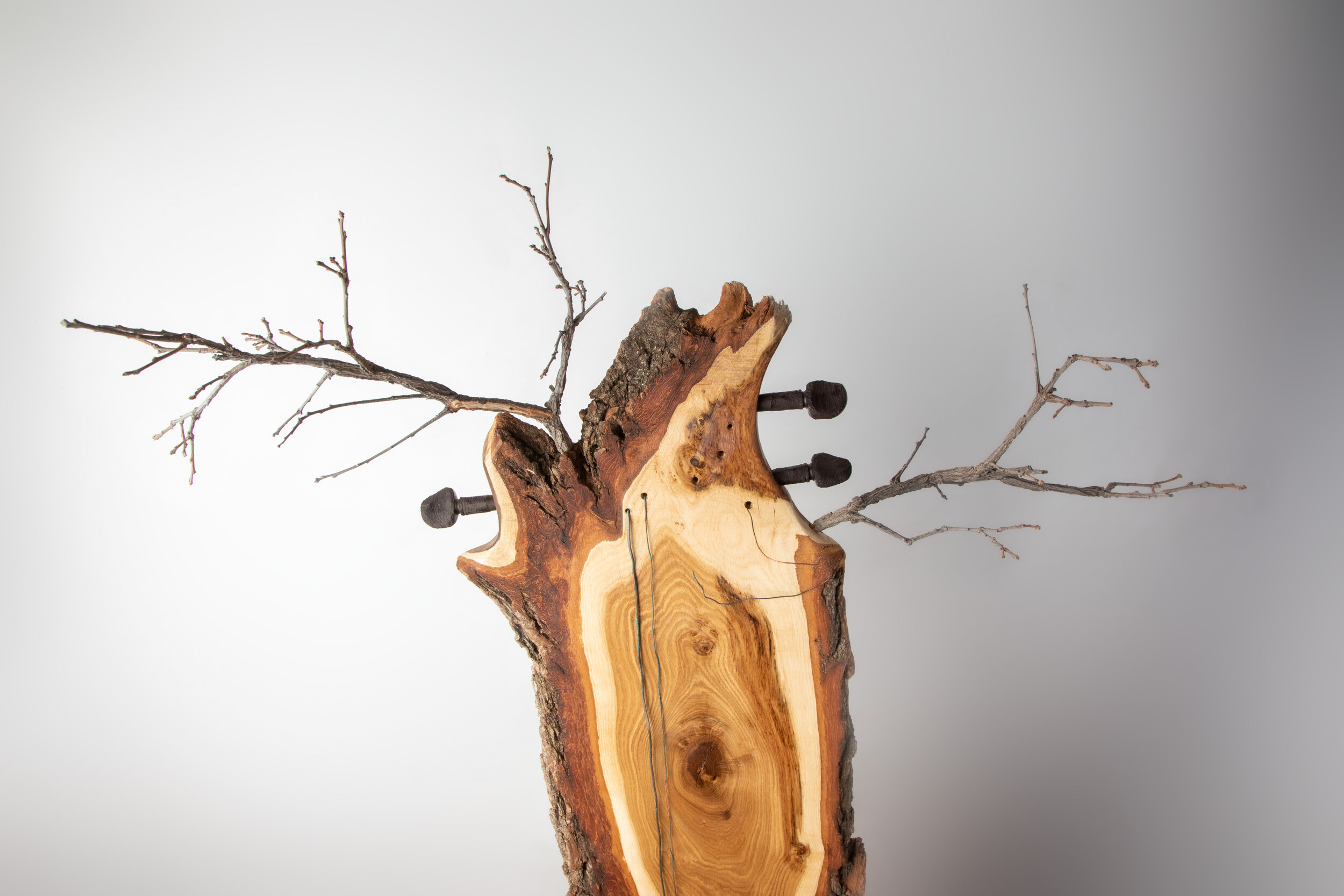
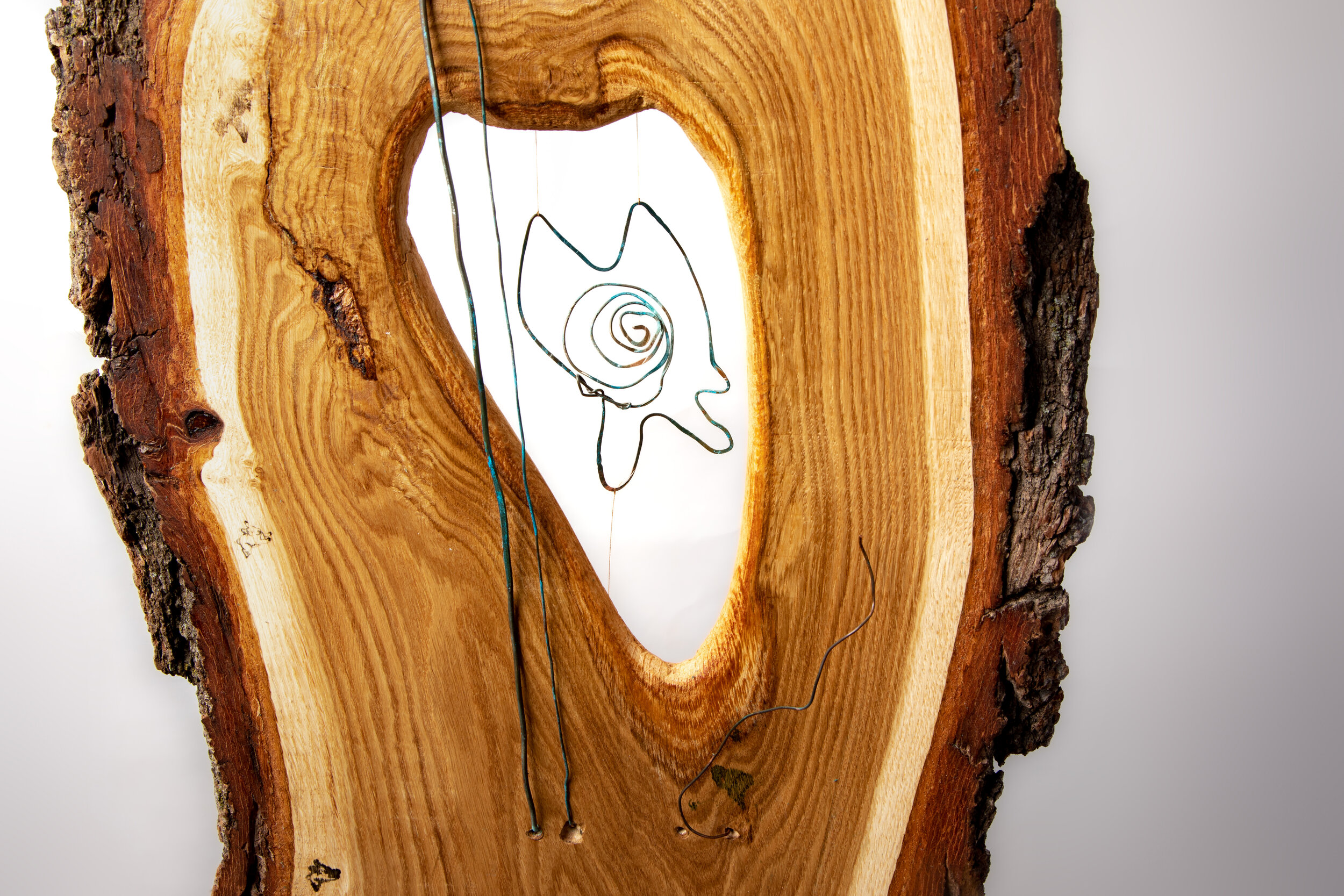
Bob Haverluck
River Music Wreck near Keeyask Hydro Dam
White Oak, copper wire with verdigris, ebony, acrylic, mounted on shield granite; 60”x20”. Available for purchase from artist ($2,400 CAD + S&H) - contact us for more information.
Read the accompanying poem written by artist Bob Haverluck in the pdf below.
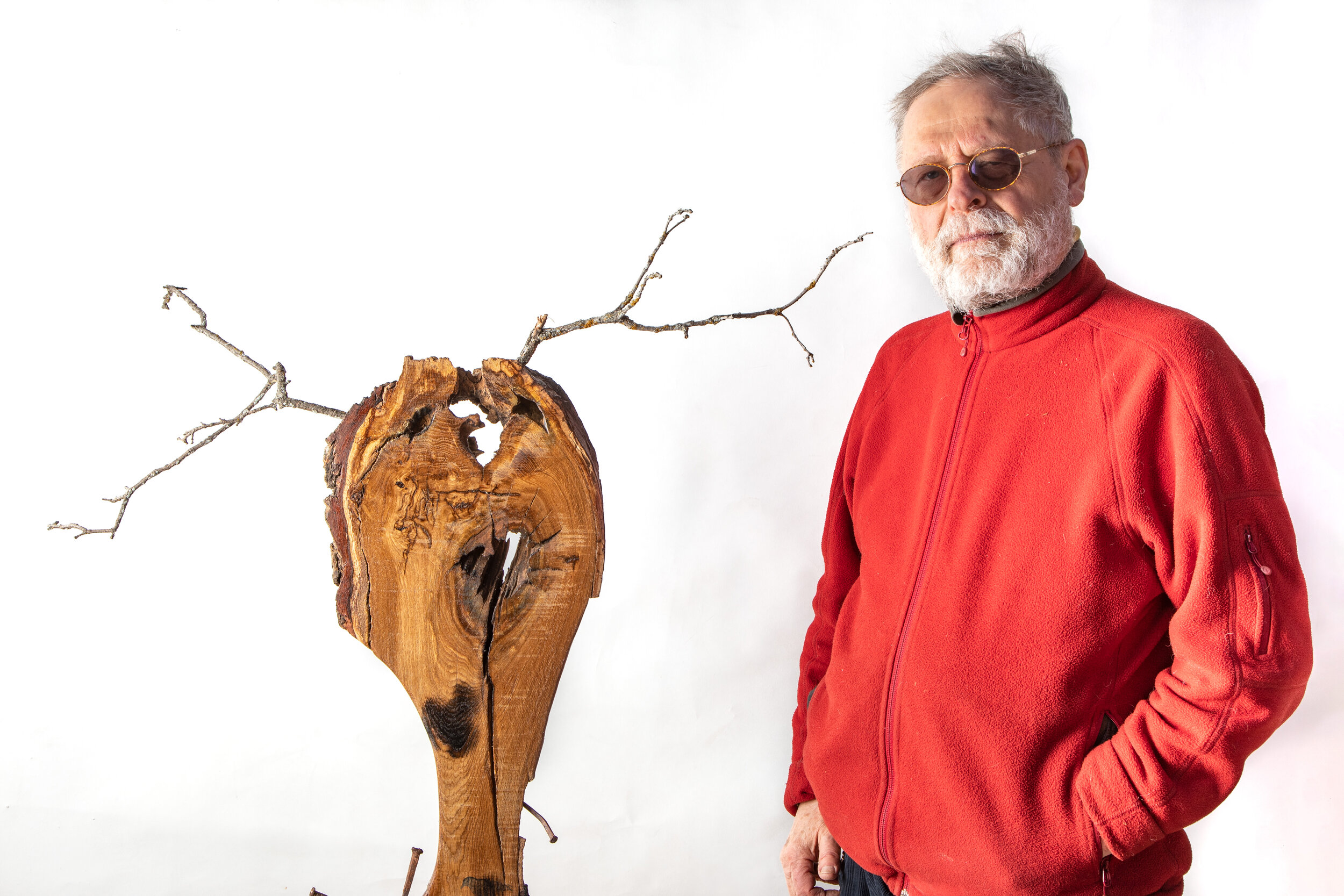
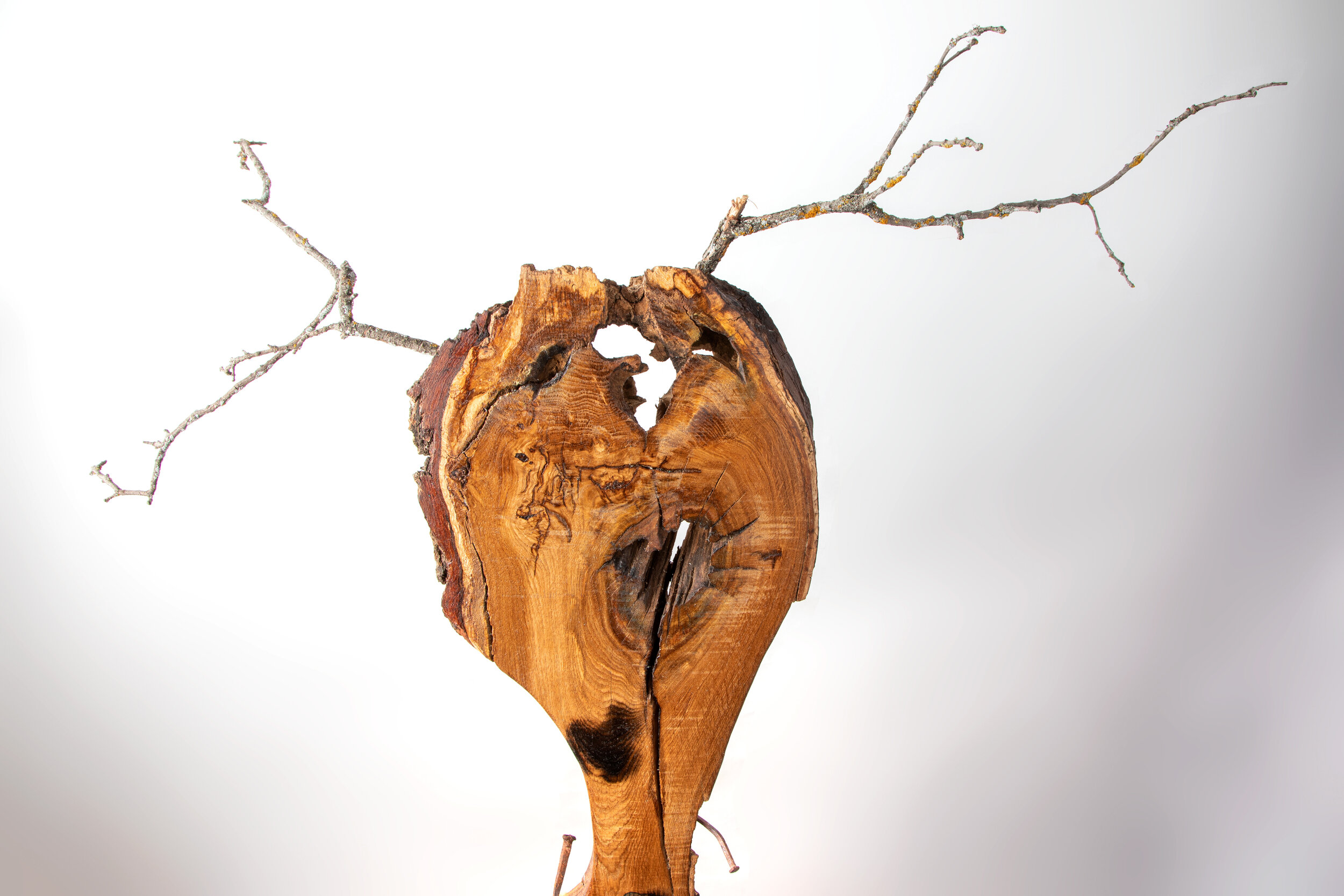
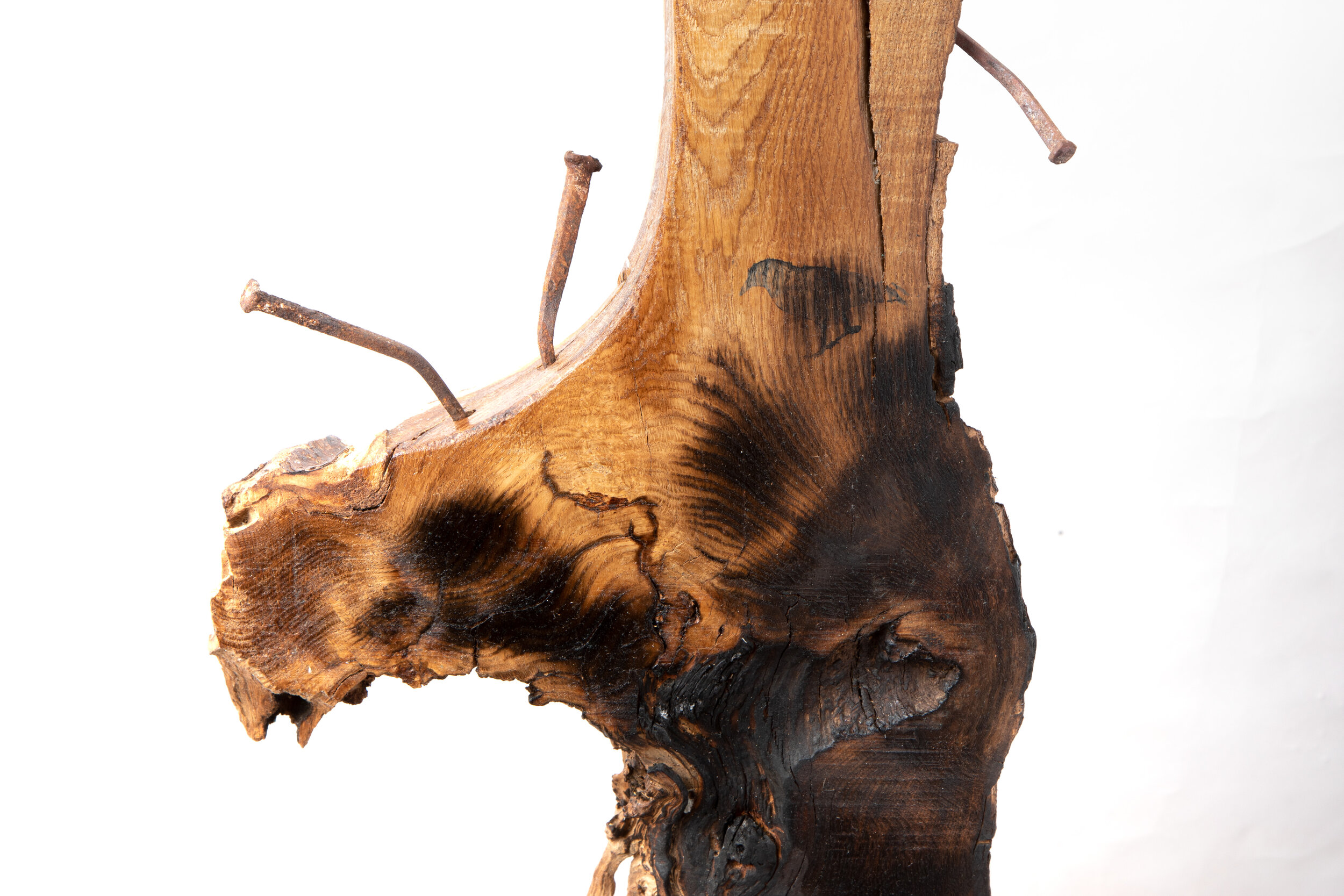
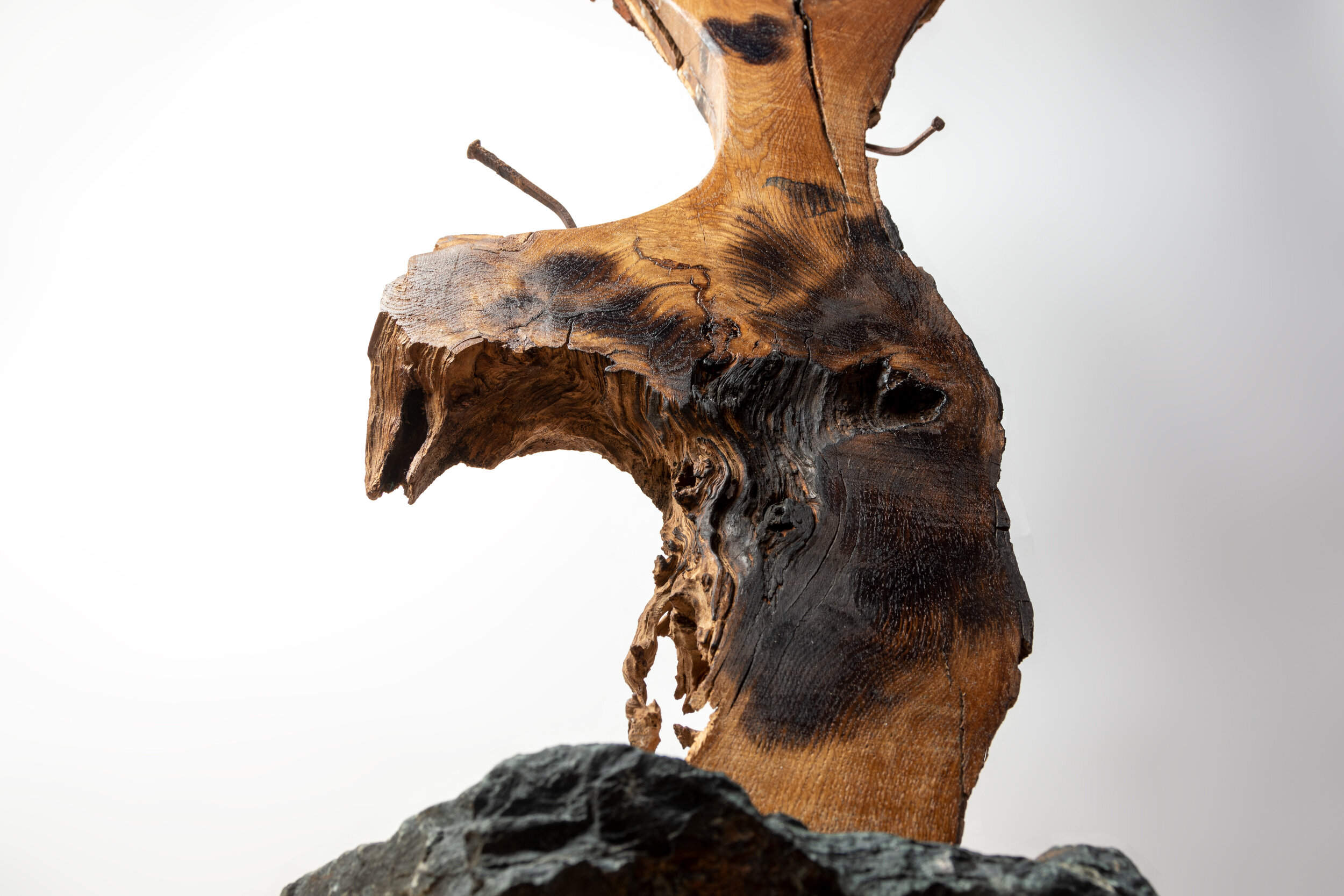
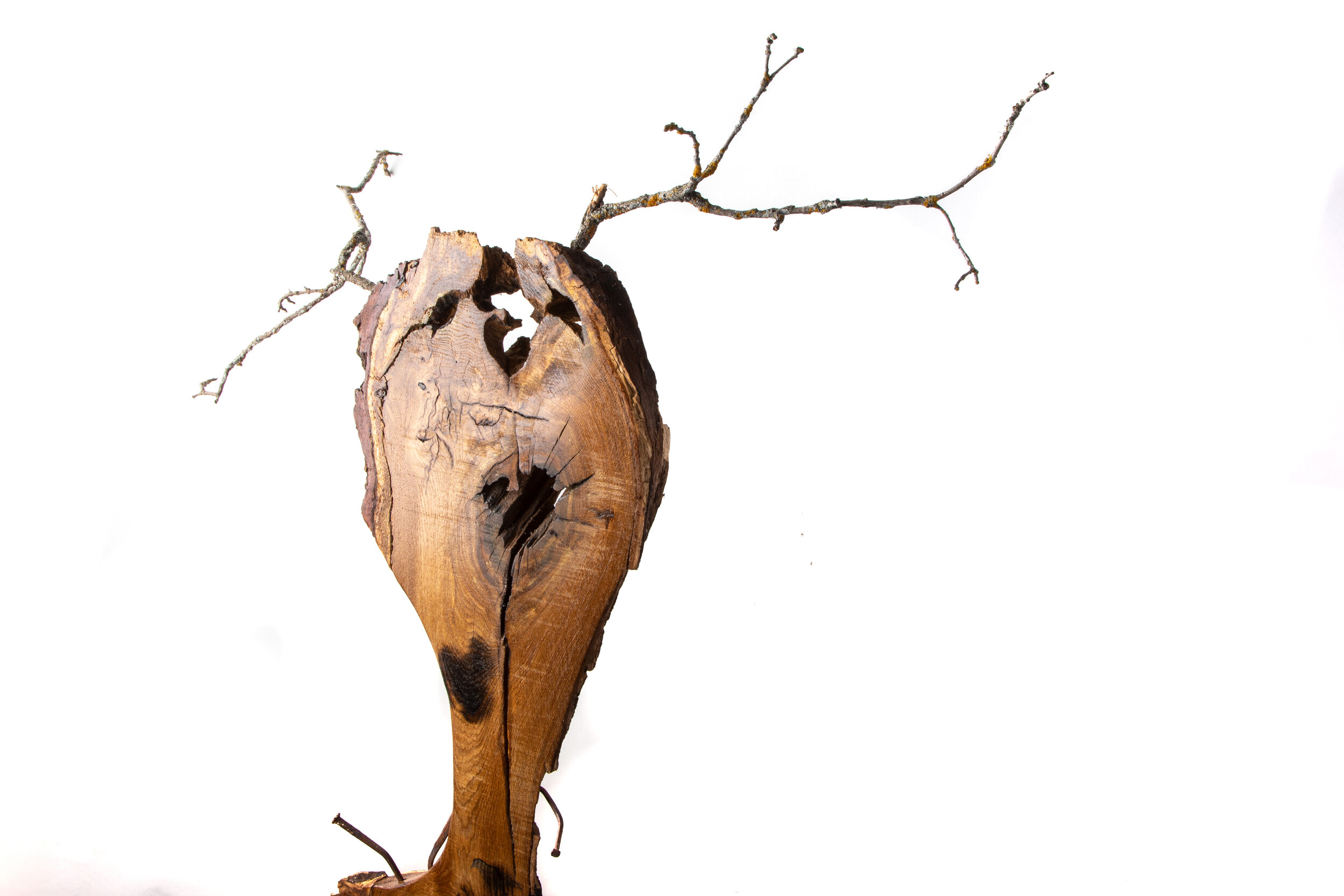
Bob Haverluck
Grieving Forest near Missi Falls Dam
White Oak, iron nails, acrylic, mounted on shield granite; 32”x34”. Available for purchase from artist ($1,900 CAD + S&H) - contact us for more information.
Read the accompanying poem written by artist Bob Haverluck in the pdf below.
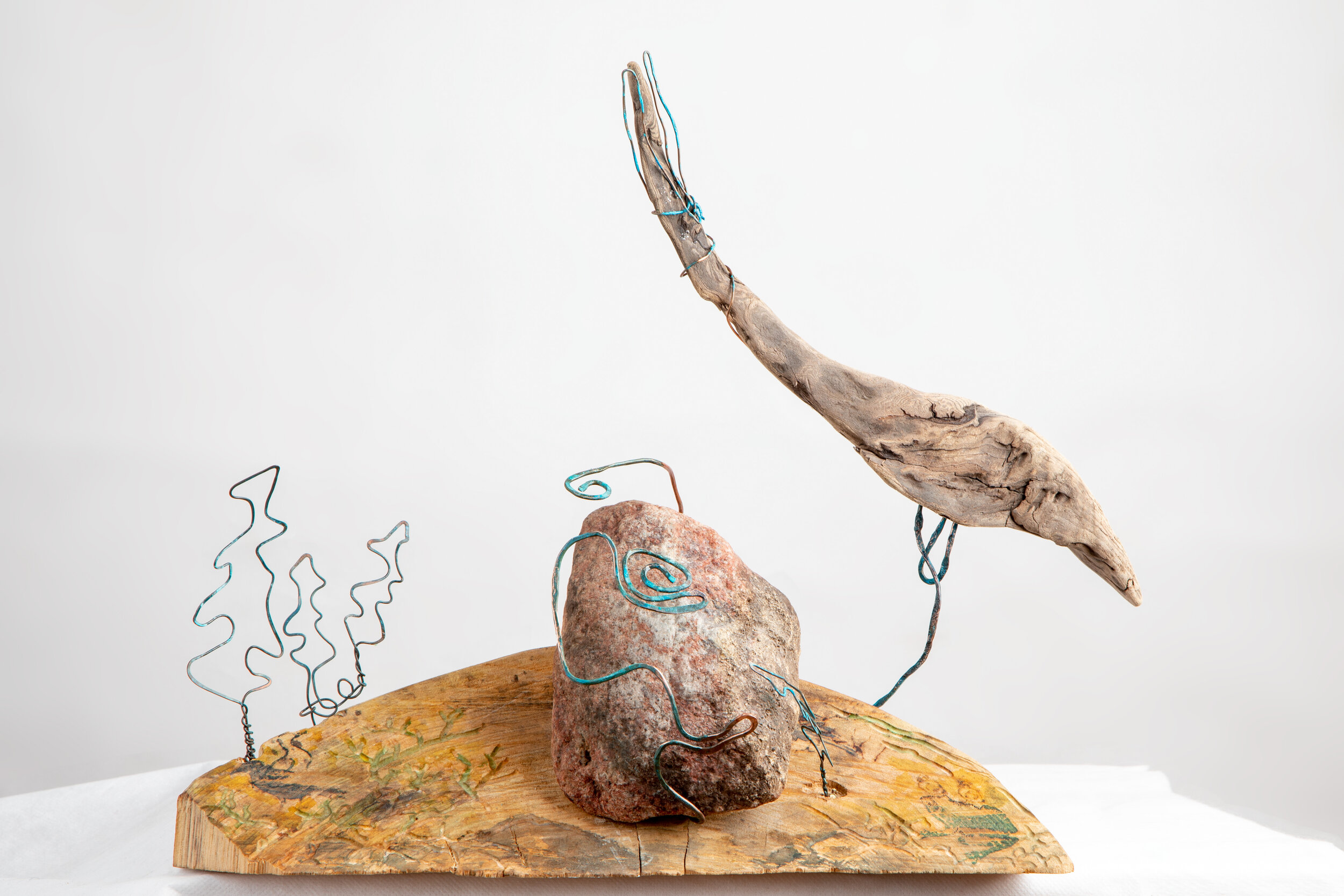
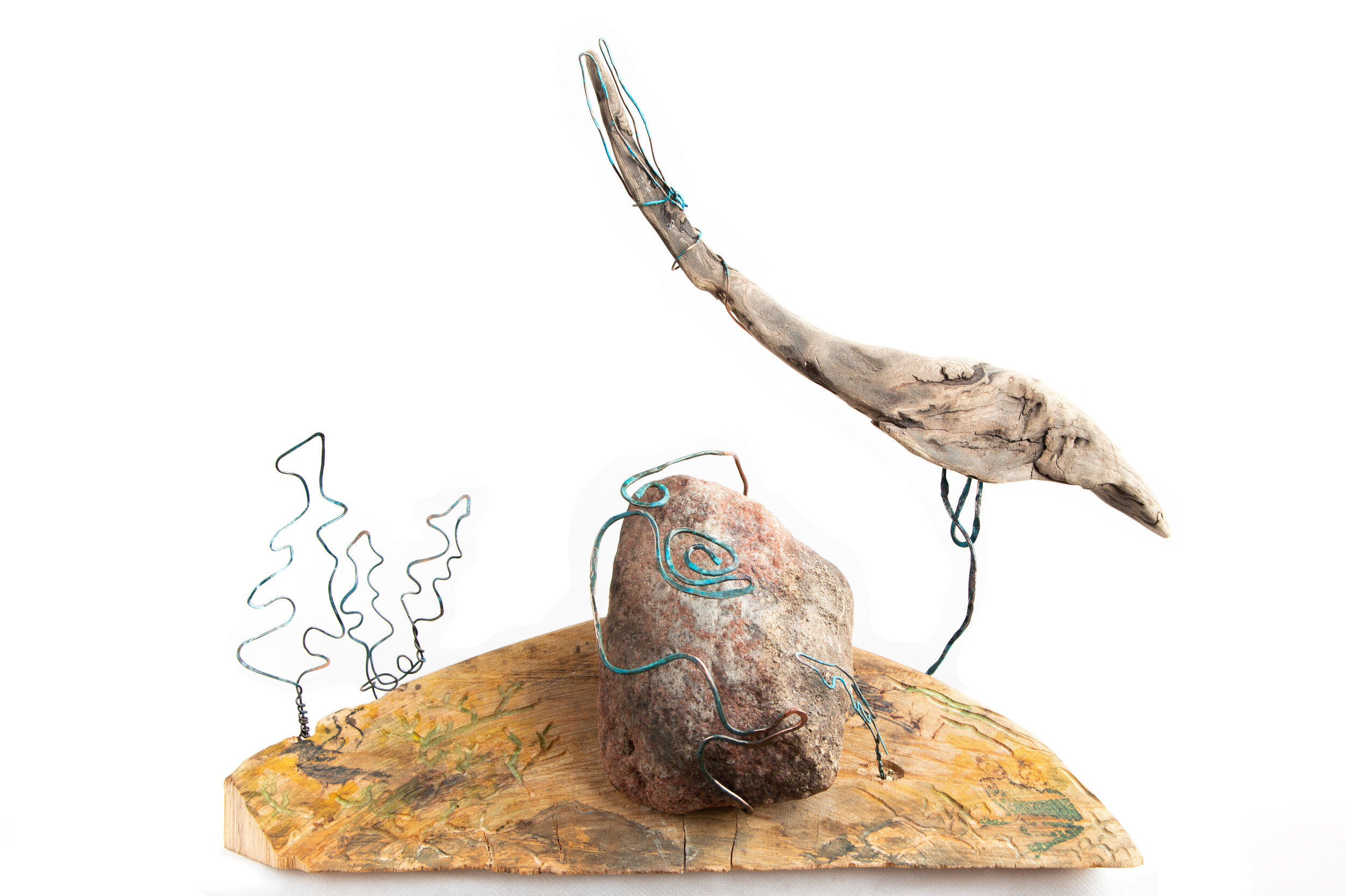
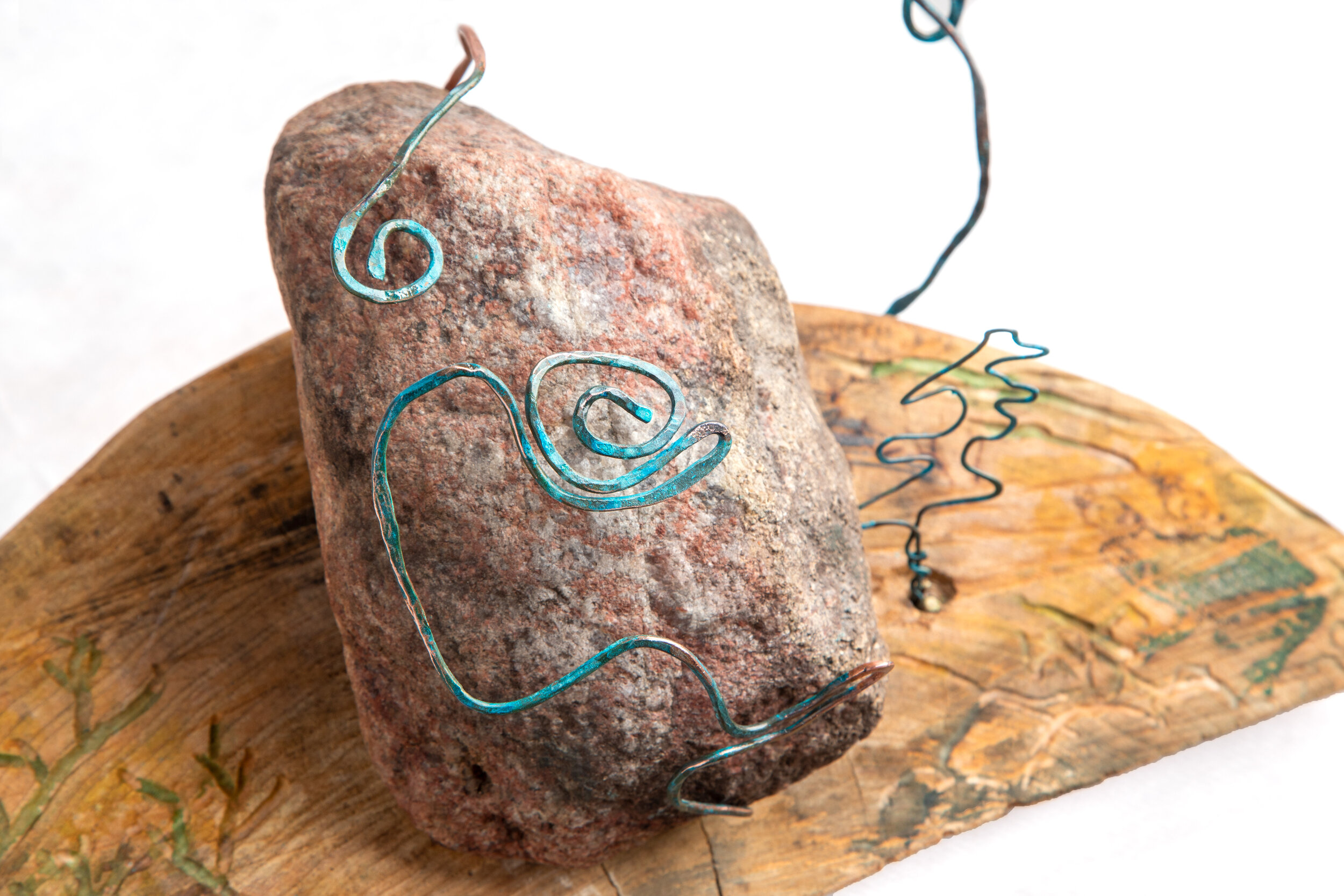
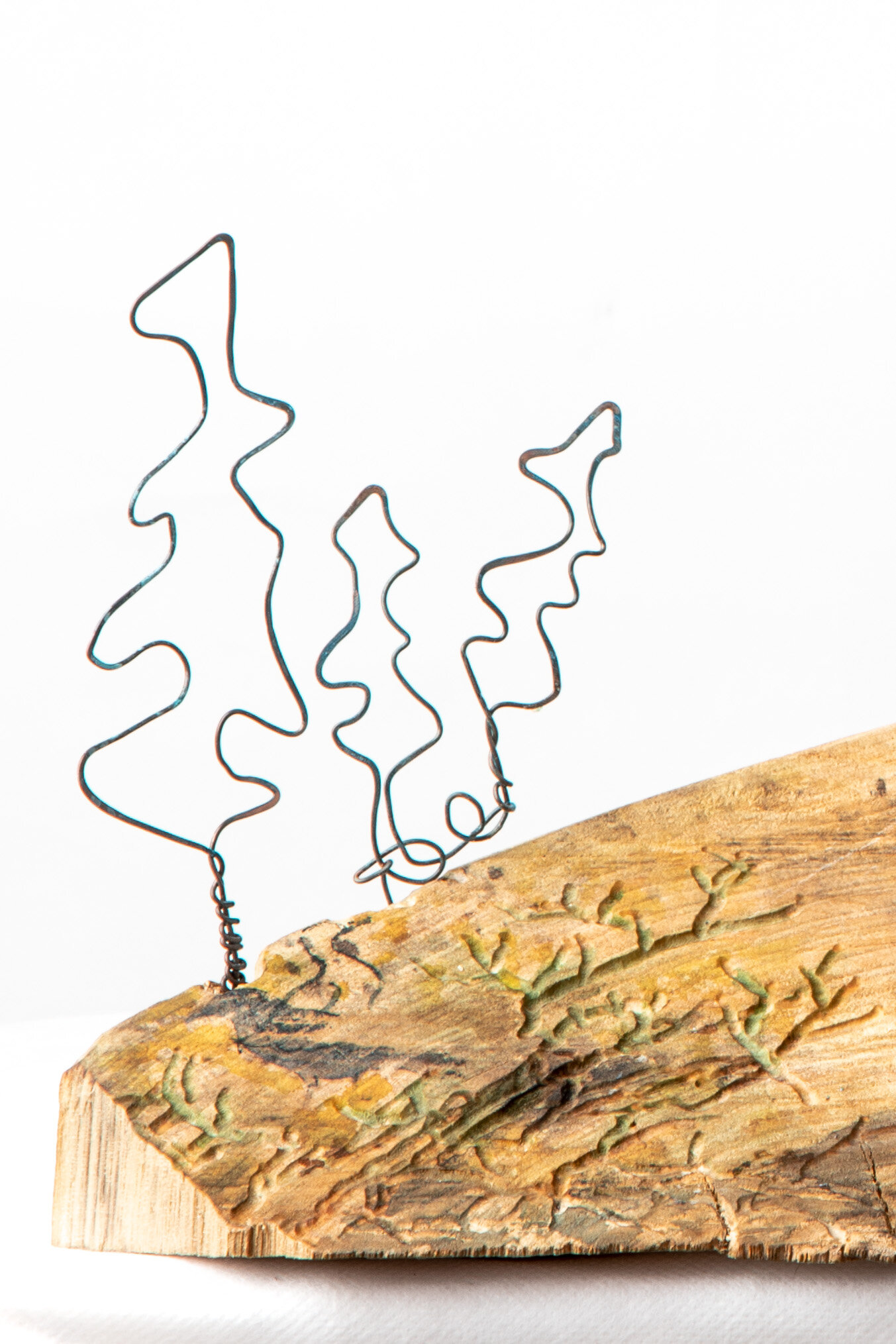
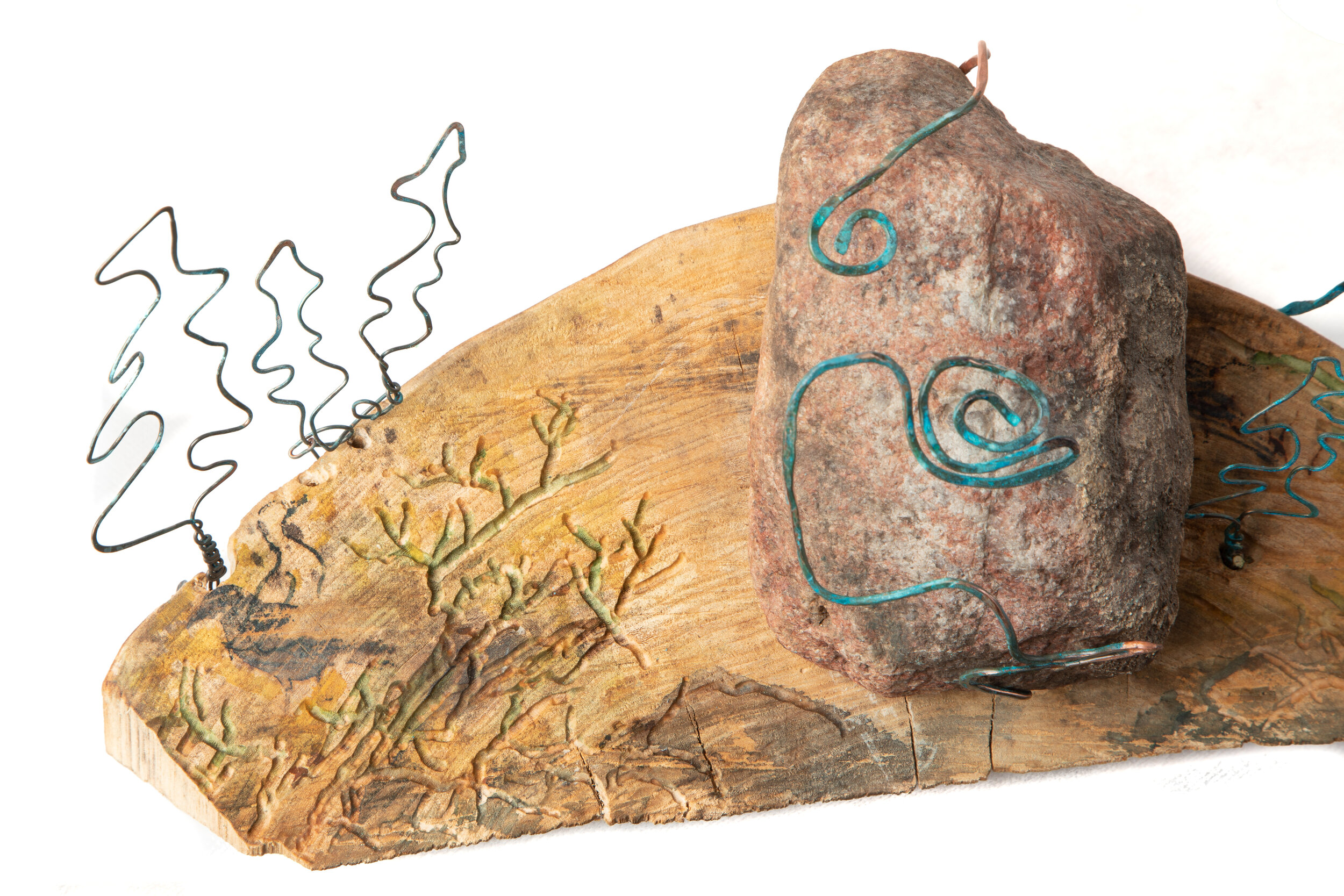
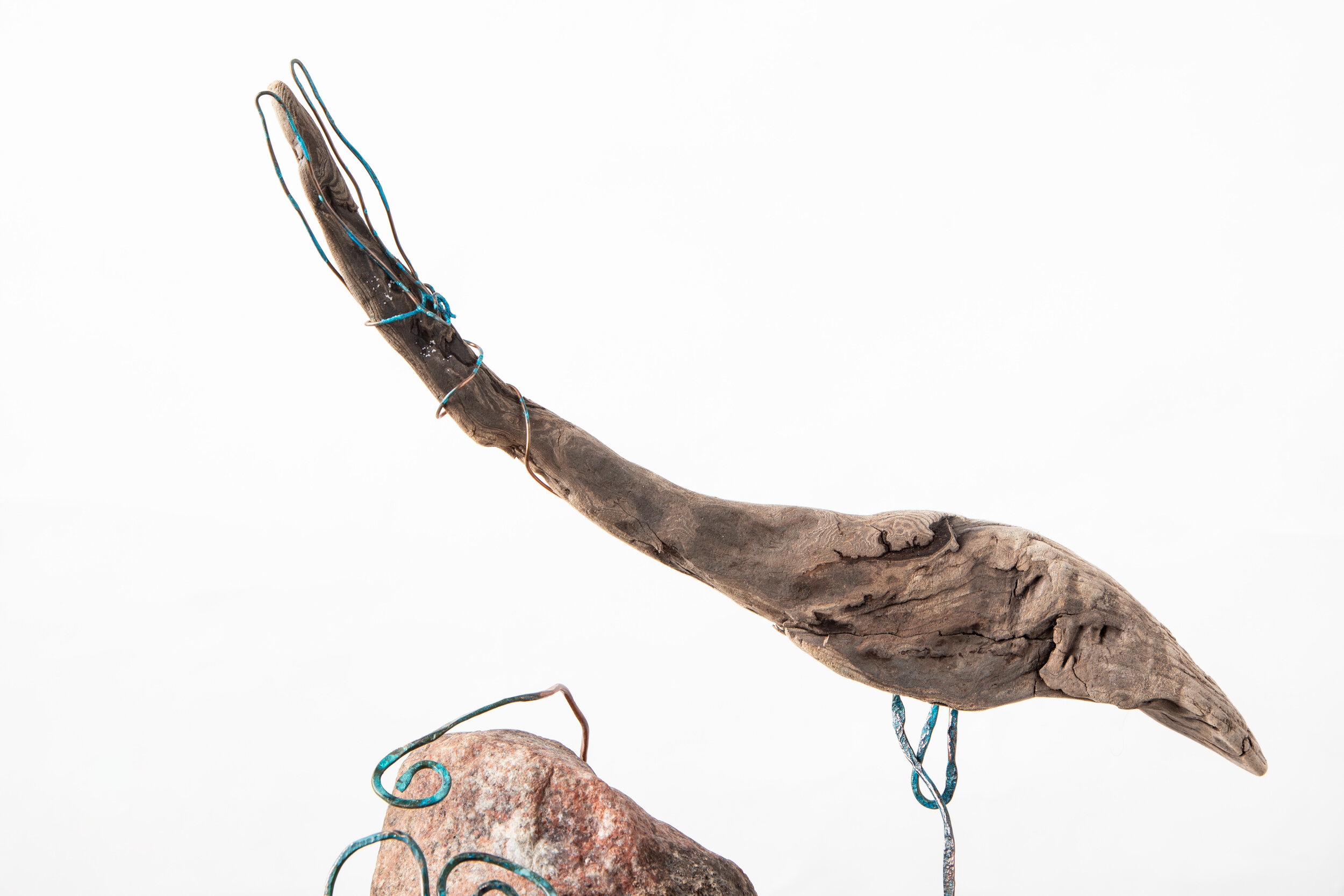
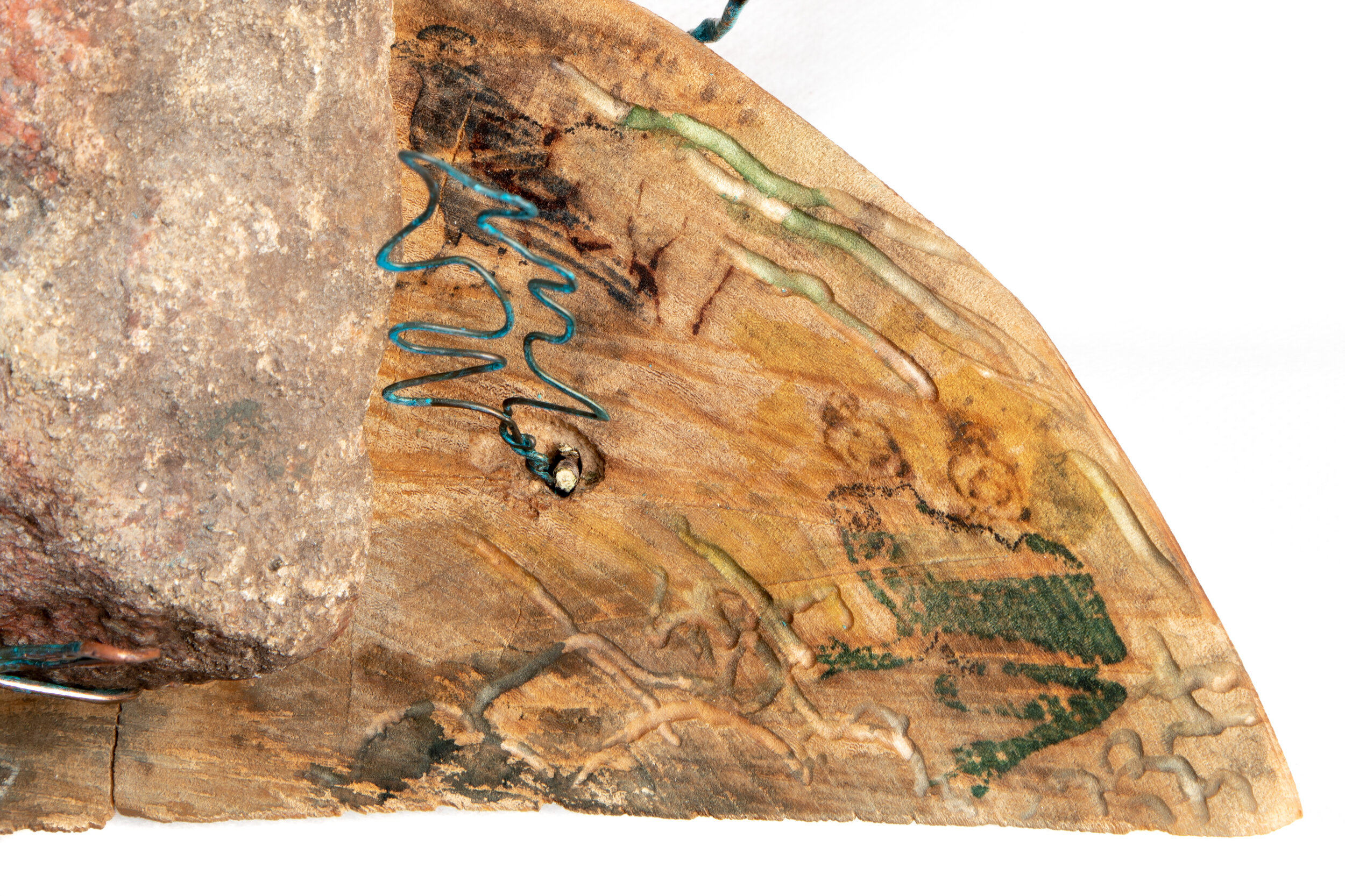
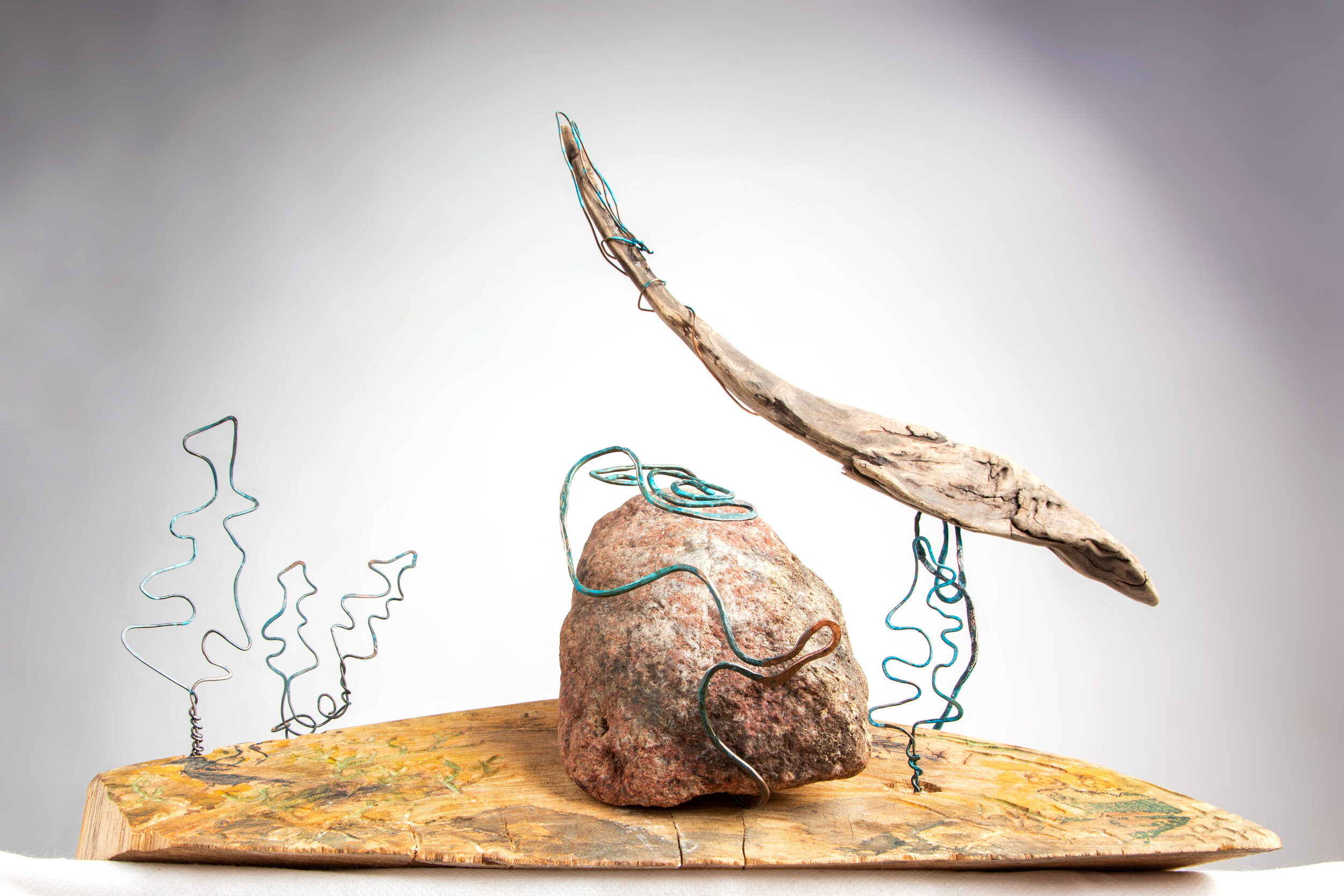
Bob Haverluck
Water Keeper Awash in Heron Rain
Granite, copper wire with verdigris, poplar, acrylic, ink; 18”x11”. Sold.
Read the accompanying poem written by artist Bob Haverluck in the pdf below.





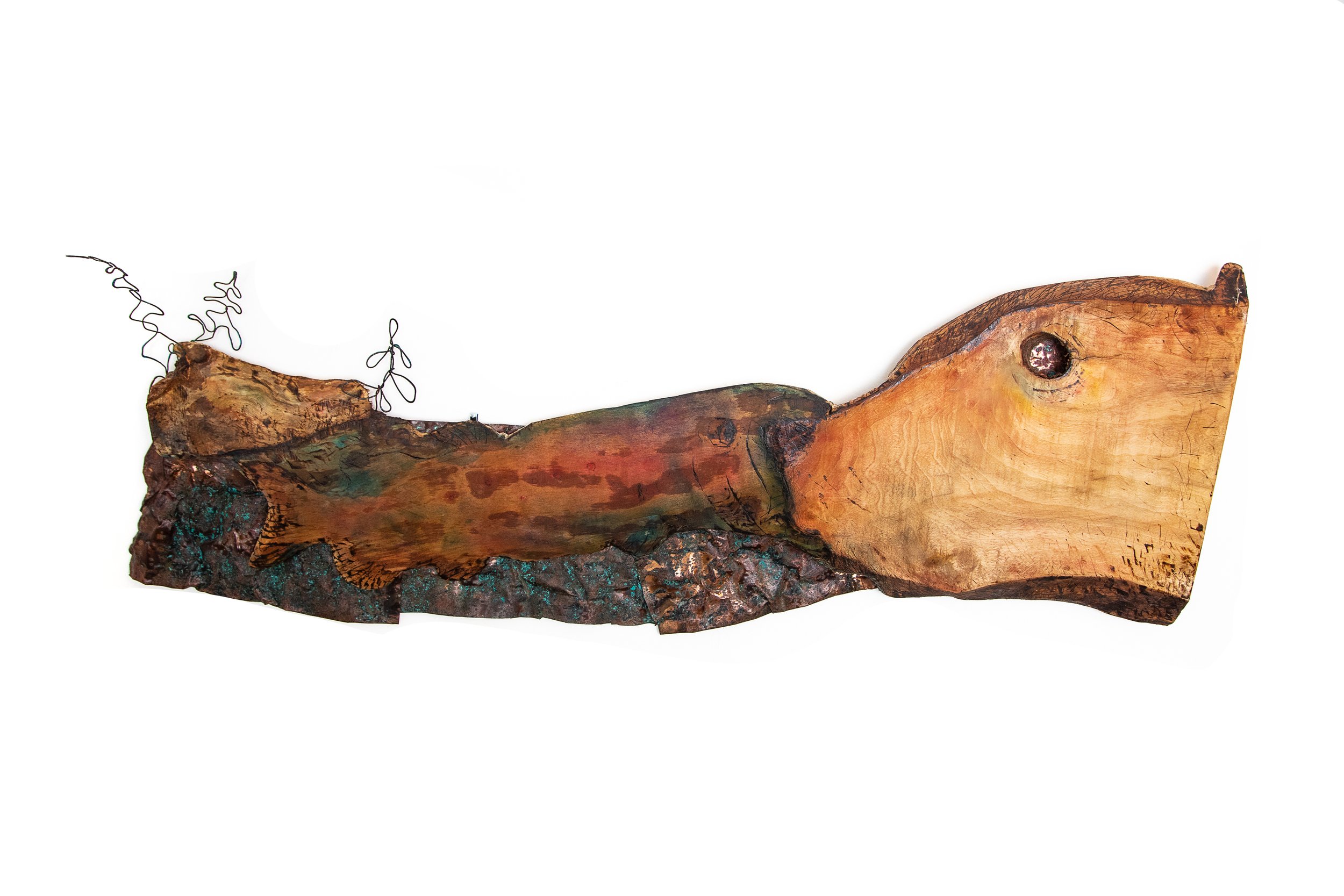
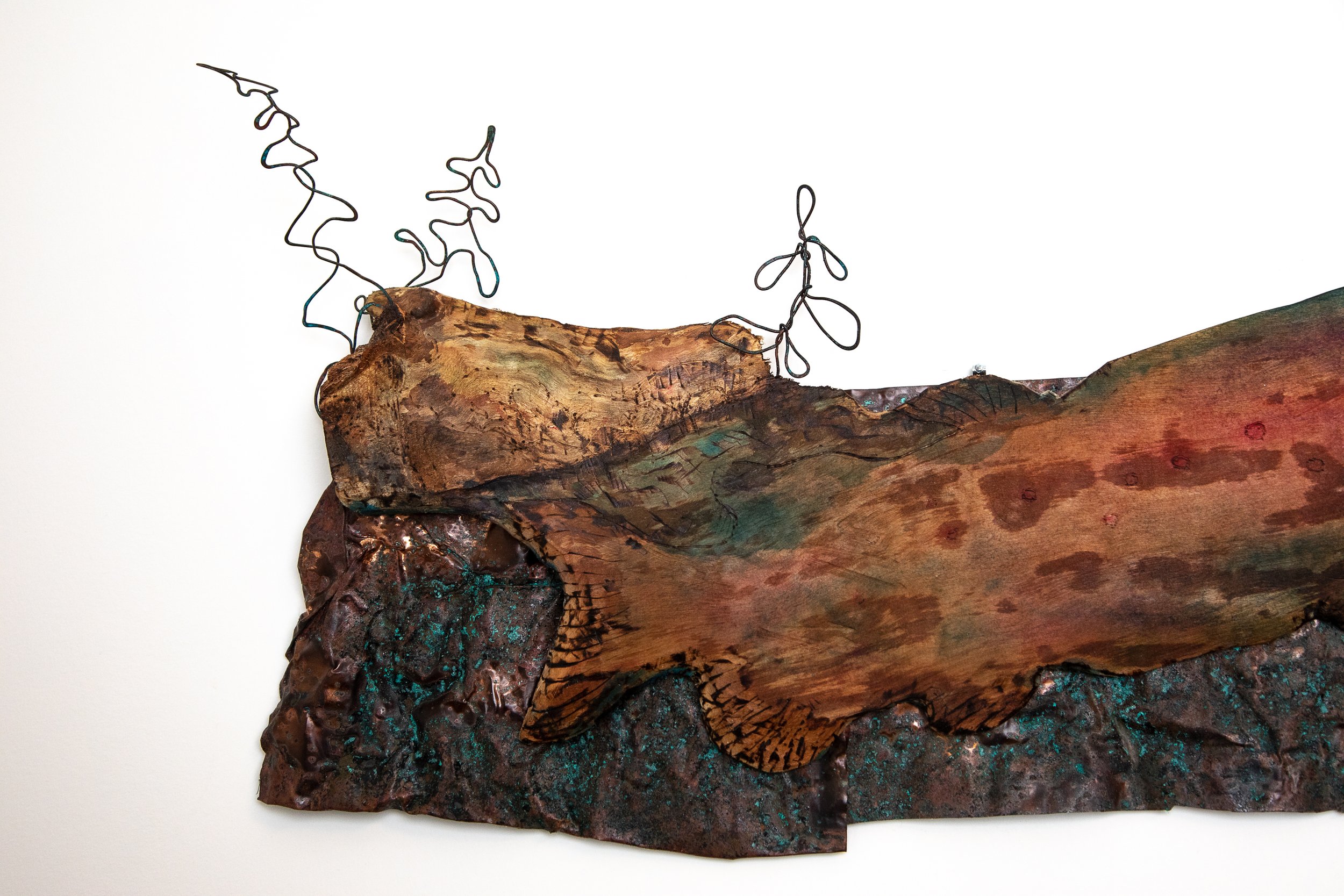
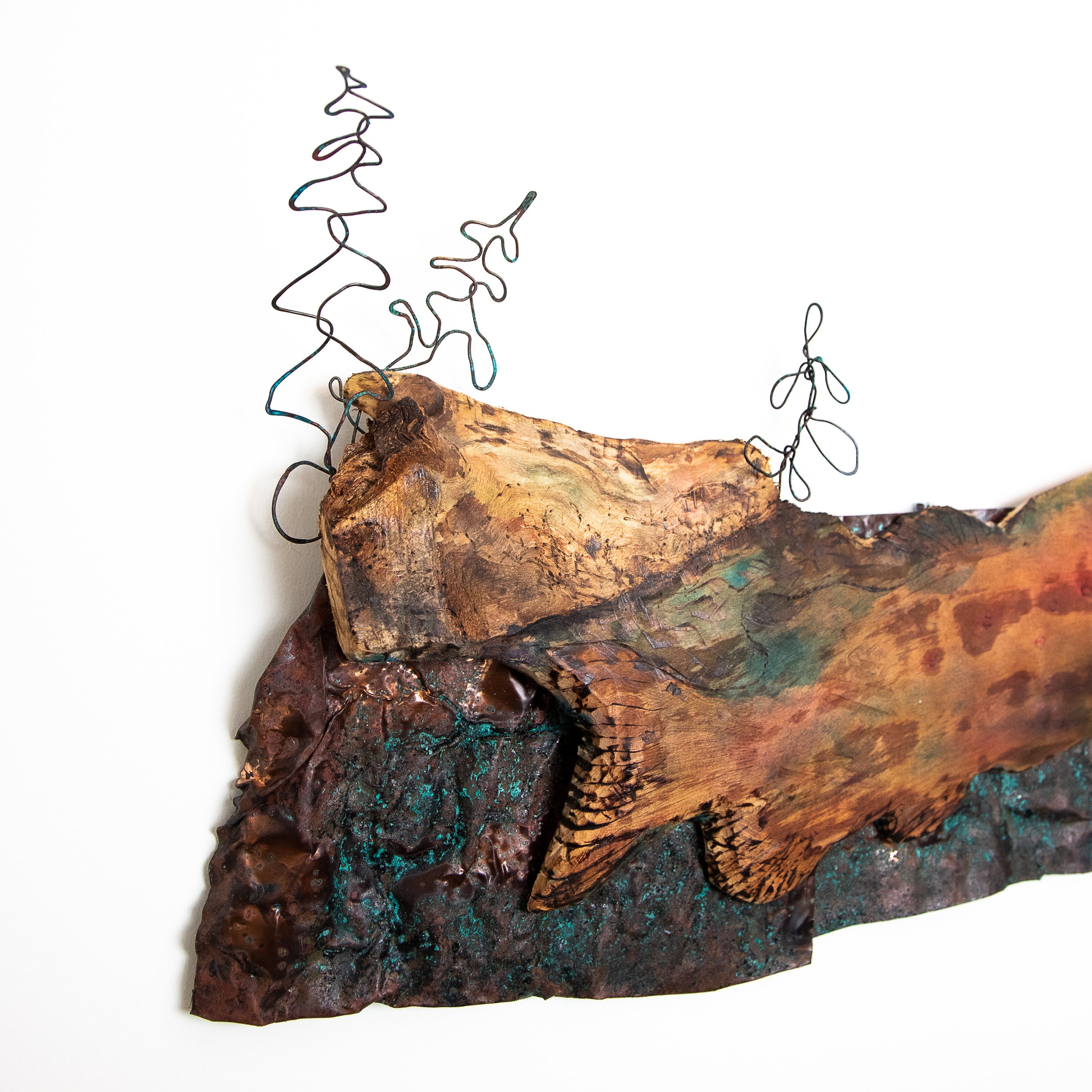
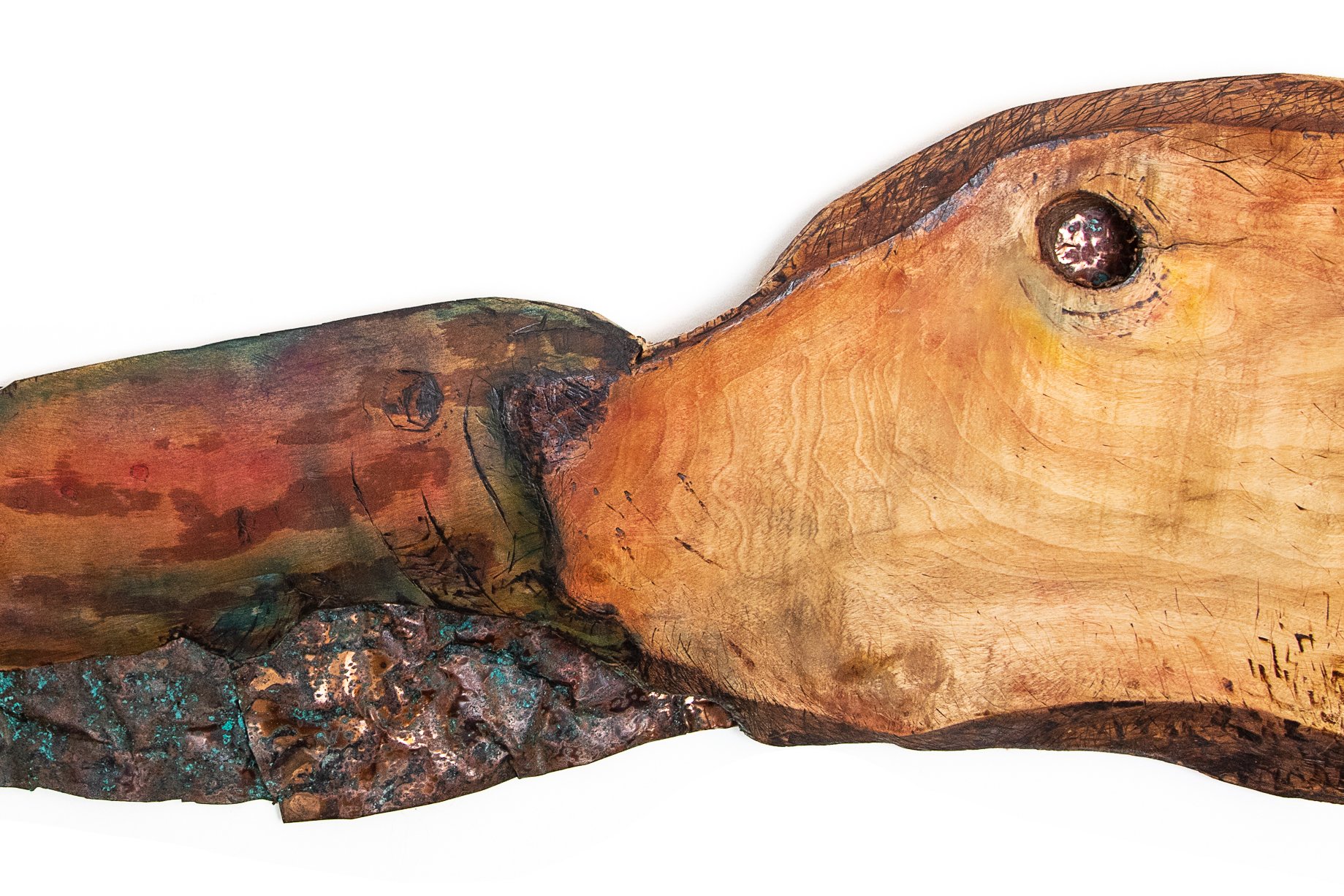
Bob Haverluck
Salmon Catching Bear
Poplar, water colour, walnut oil, hammered copper, copper wire; 30”x16”.
The wood made me do it. It had a Bear in it. It had Salmon in there and a distant shore line. And verde gris conjured onto the hammered copper wire of the distant trees then played off the hammered copper sheeting, that helps say — water.
On seeing this work, a friend said out loud: “That sculpture needs a trickster story.” About that time I was re-reading David Suzuki’s telling of the green fuse of the great trees of BC’s forests curiously being N15 nitrogen. N15 comes from the ocean, which is nowhere near the great trees of the interior. That led back to Salmon and Bear and the business of the trickster story.
Because…because, Salmon it turns out incarnates the nitrogen. By river and creek, Salmon journey up into the interior. Bear eats Salmon. Bear fertilizes the shoreline and its trees. Bear along with feathered and furry kin who eat the largely uneaten carcasses that Bear leaves, also fertilize the shoreline and far beyond. But, why did Bear decide to eat Salmon? And why did Salmon catch Bear? And where would the forests, river and stream waters be without these community representatives of land and waters?
The story is written, but only one of the drawings to go with it is done. In time it may help to say again in a different way that —Trees need Rivers and Rivers need Trees. And then there is Ocean.
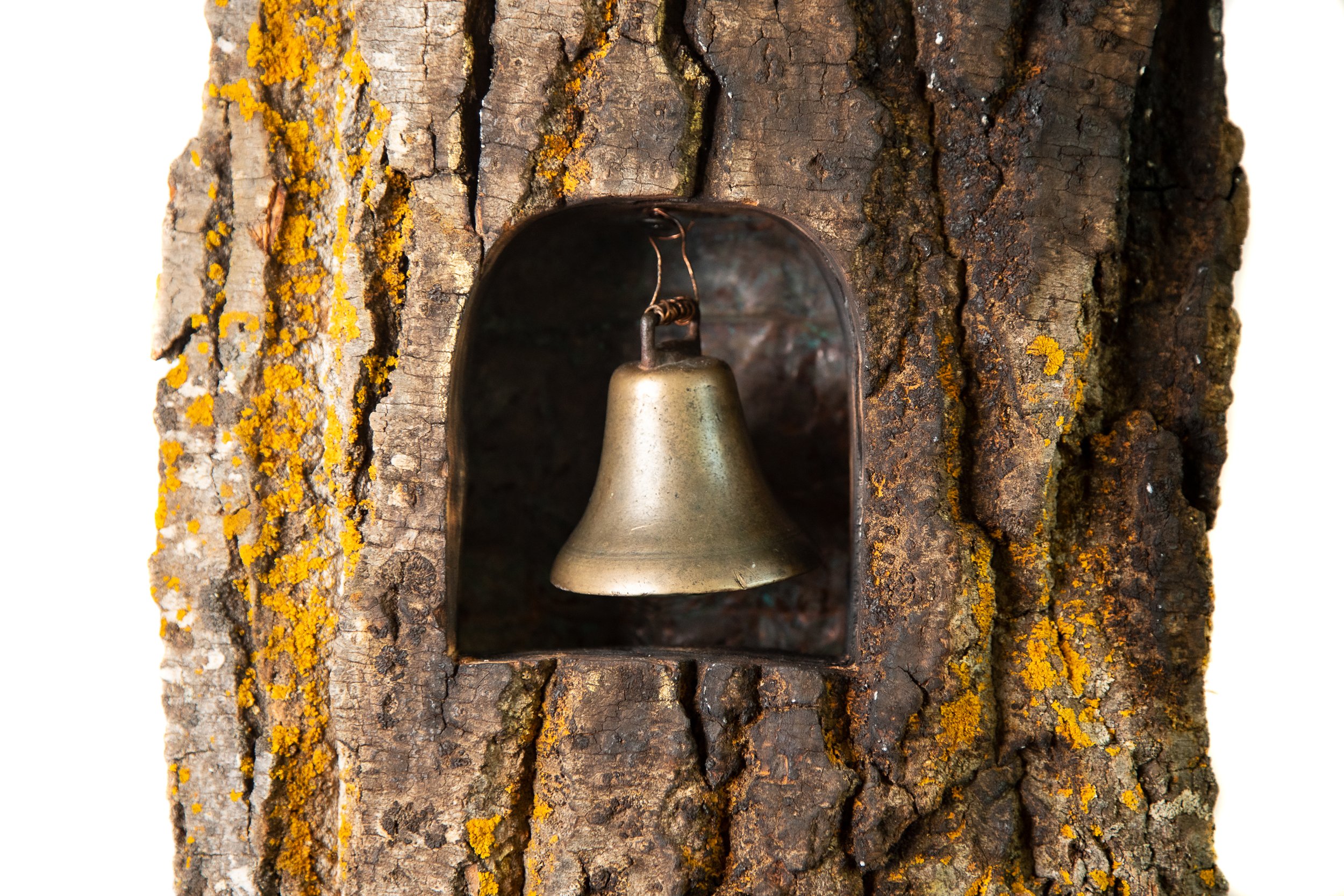
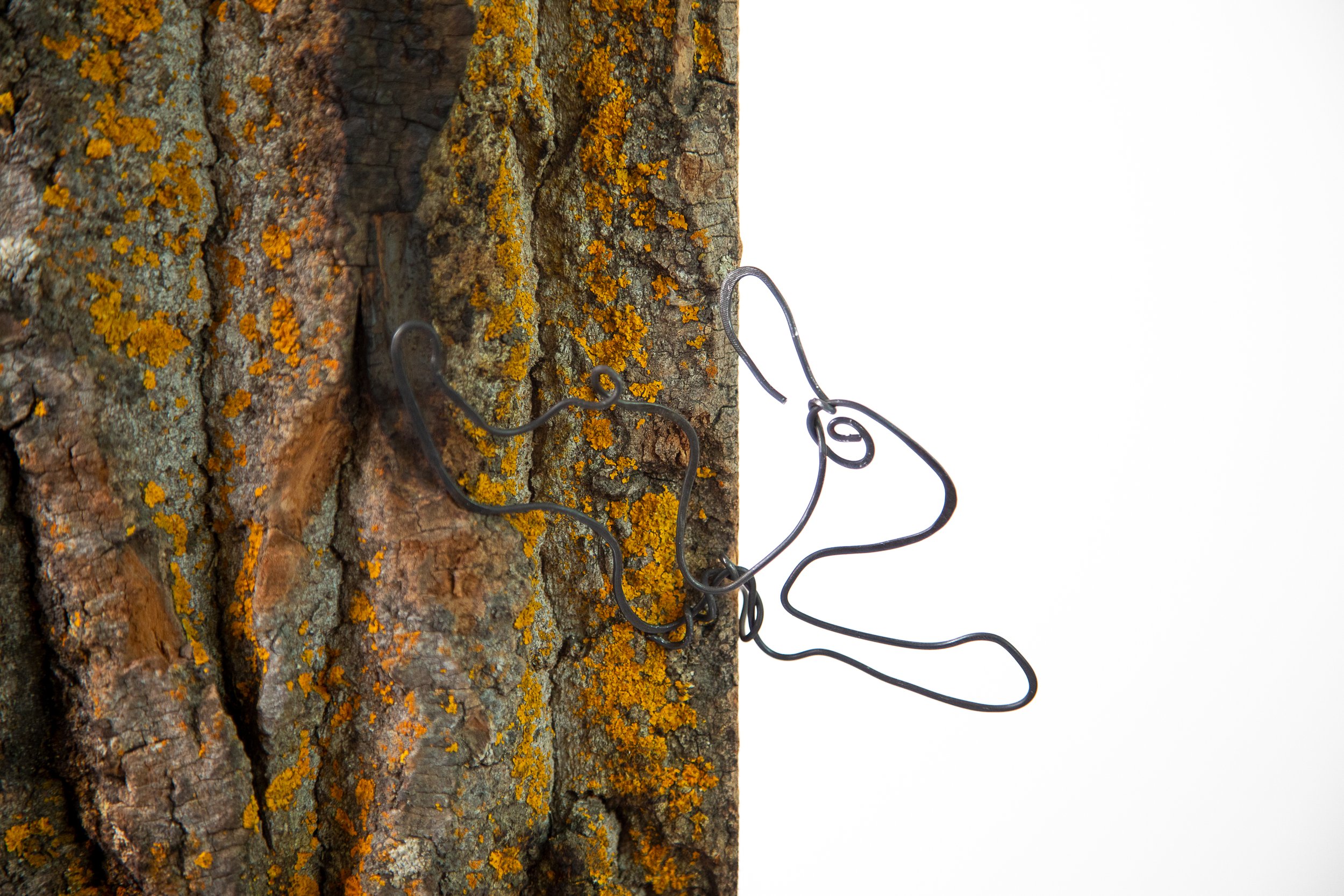
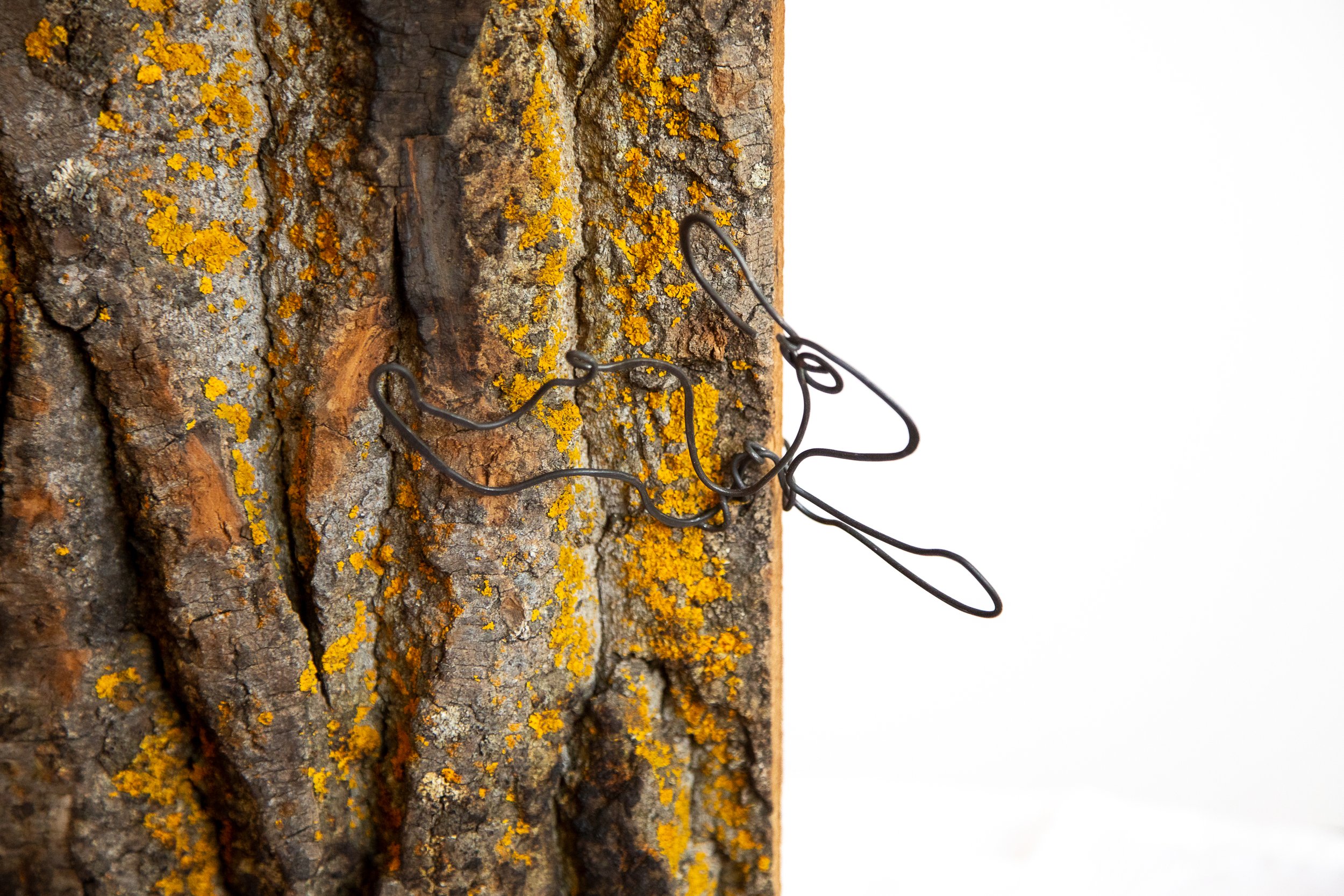
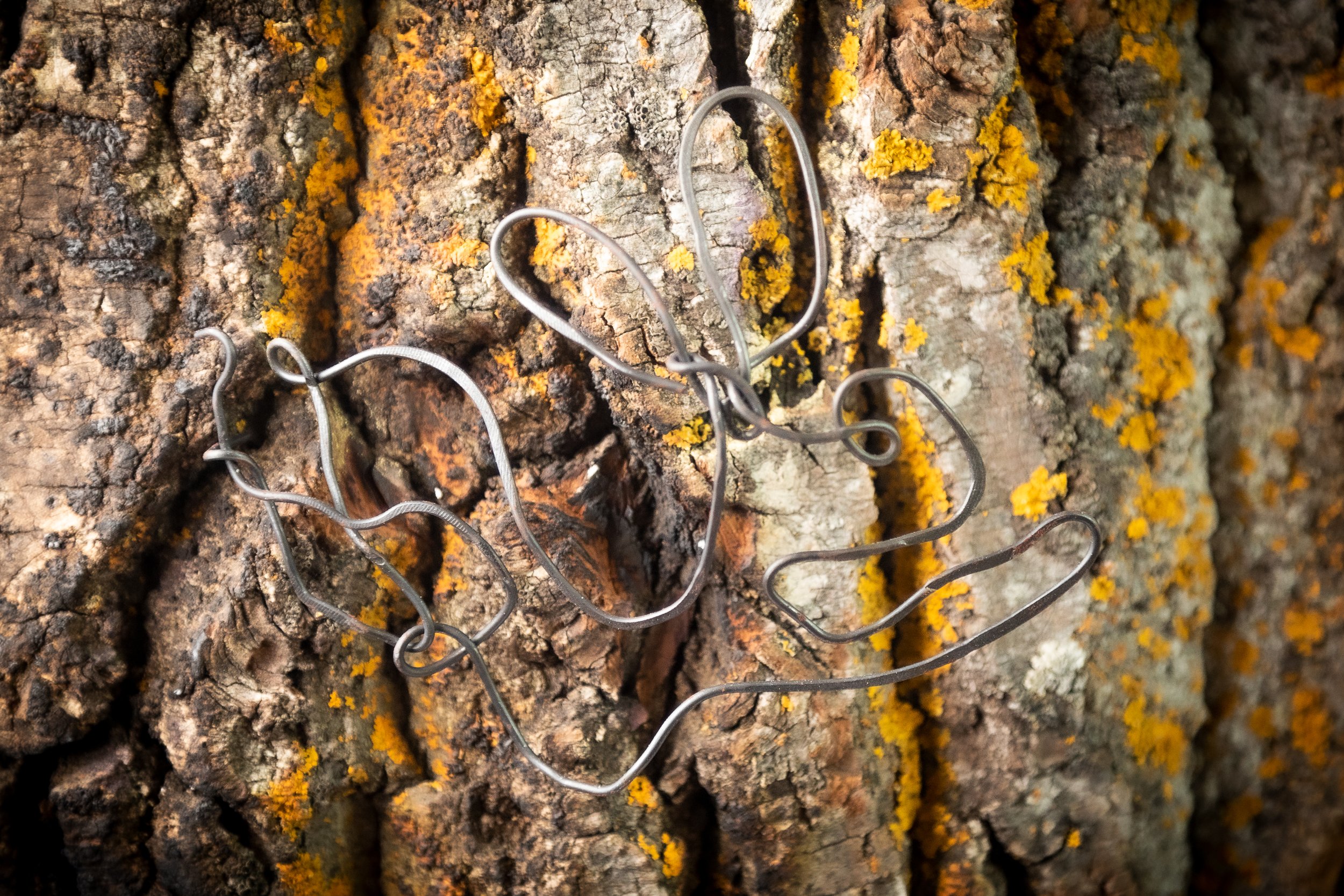
Bob Haverluck
Calls to Prayer in a Time of Wildfires
Oak with bark and lichen, fire, copper, bronze , steel wire; 32”x 16”.
Alarm-bell-prayers of WOE are called forth for some by forests and grasslands aflame in every hemisphere. As well, arising are prayers of WOW speaking and giving feet to some hearts gobsmacked by the resilience and passion for life amidst much death. Maybe this sculpture can sound both. Notice the enduring ambiguous bell, framed by scorched bark and the two hammered steel wire rabbits, escapees from the flames on their way to make a menagerie starting with two.
For some a sculpture may be a kind of prayer and may help the heart speak along with the head as may dance, song, photograph, painting, etc... The truths of our ecological crises and responses need to be articulated, feelingly shaped on way to being addressable characters. For this smoky business of disasters is in us, outside us and between us and needs to be feelingly voiced, bodied forth.
Nevertheless, an artwork may ring no bells for those to whom it is offered. Or it may enthral for amoment and then go the way of a good glass of wine. Rather than being the stuff of a radical aesthetic, it may become, and usually does become a kind of anaesthetic. Not unlike much field research done and delivered to government agencies. Yet art like science, perhaps this sculpture, may offer a kind of catharsis that helps put the arse back on the road that otherwise is just stuck in its chair. It may be a kind of starting bell.
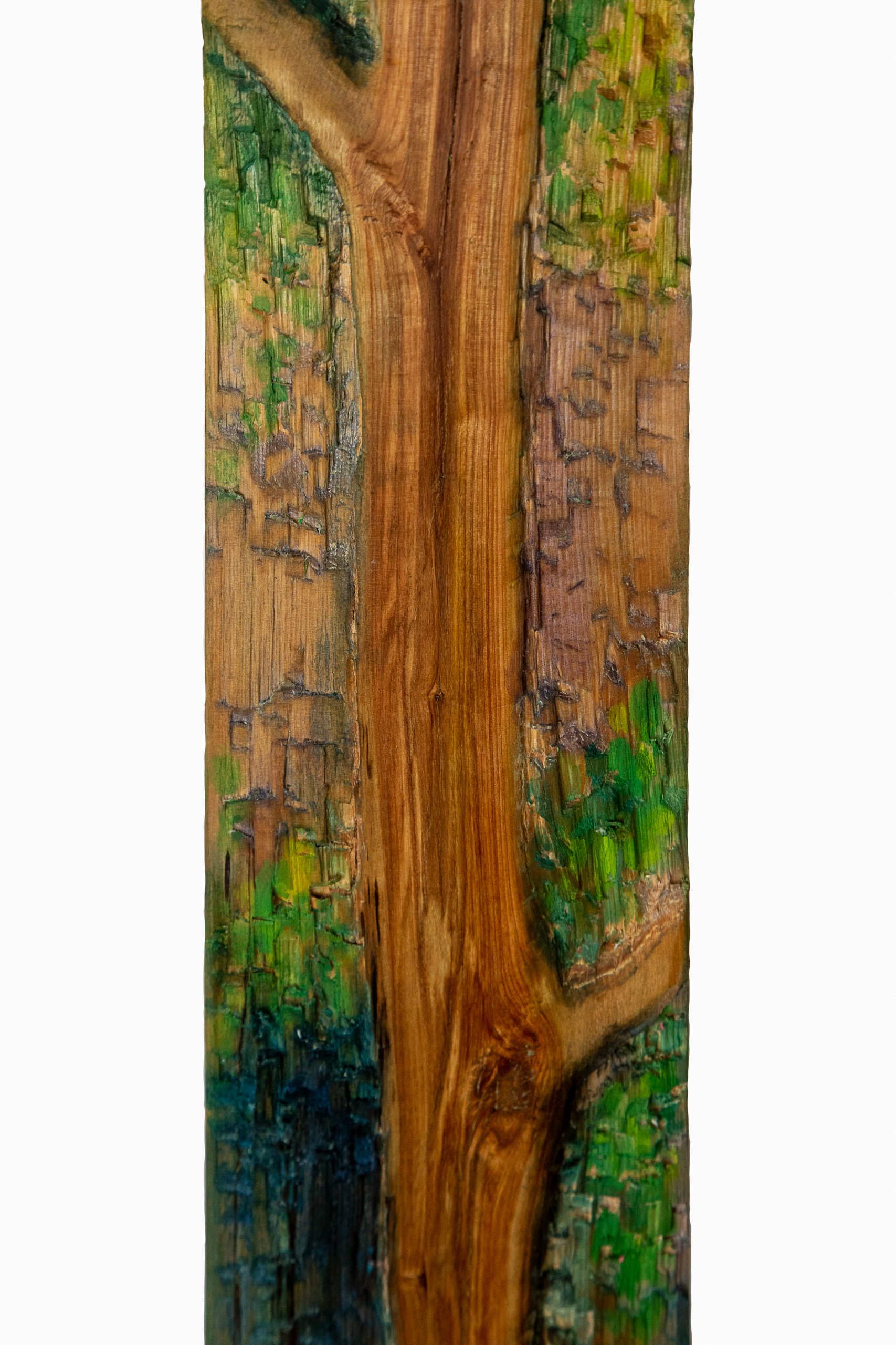
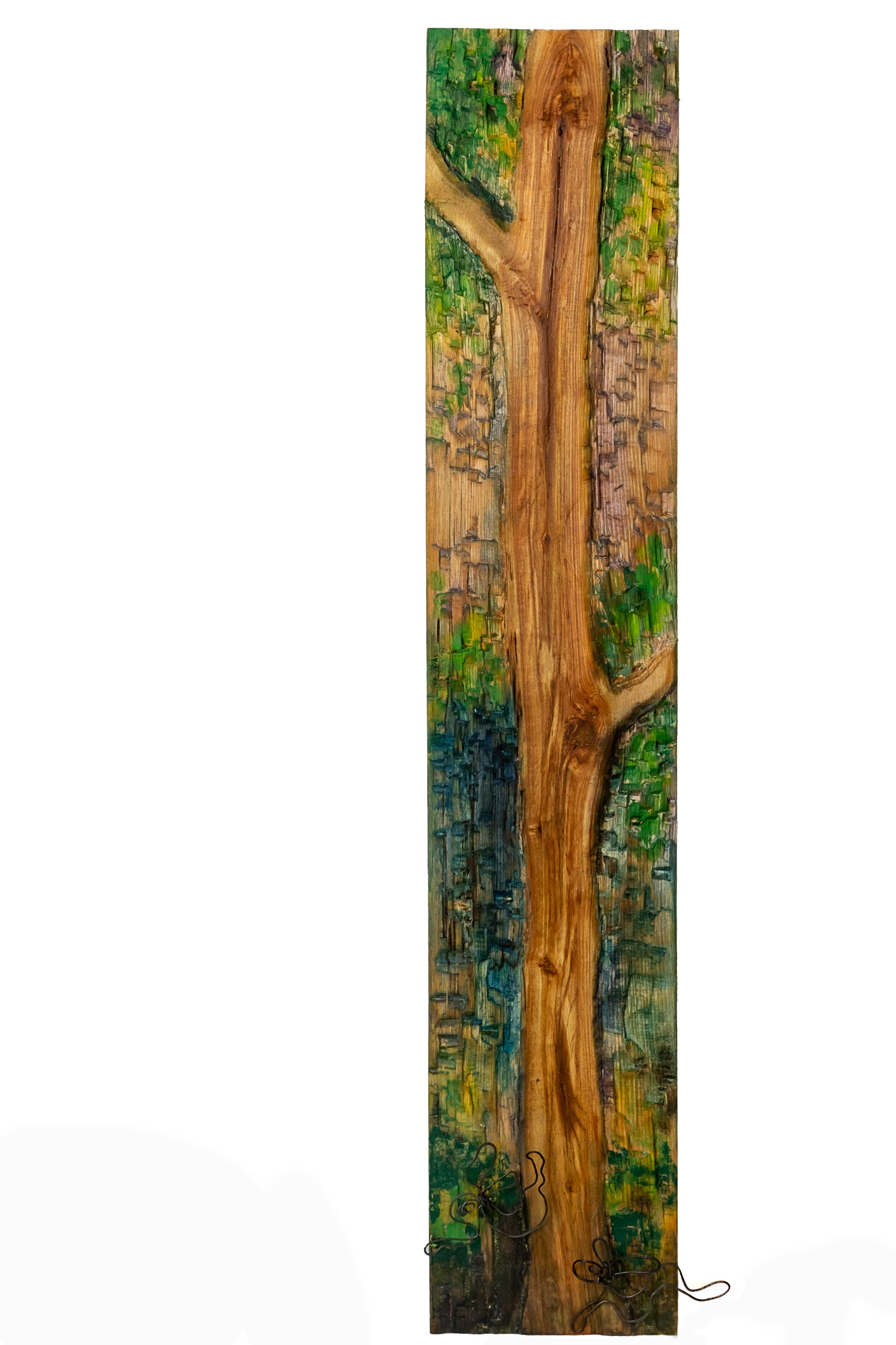
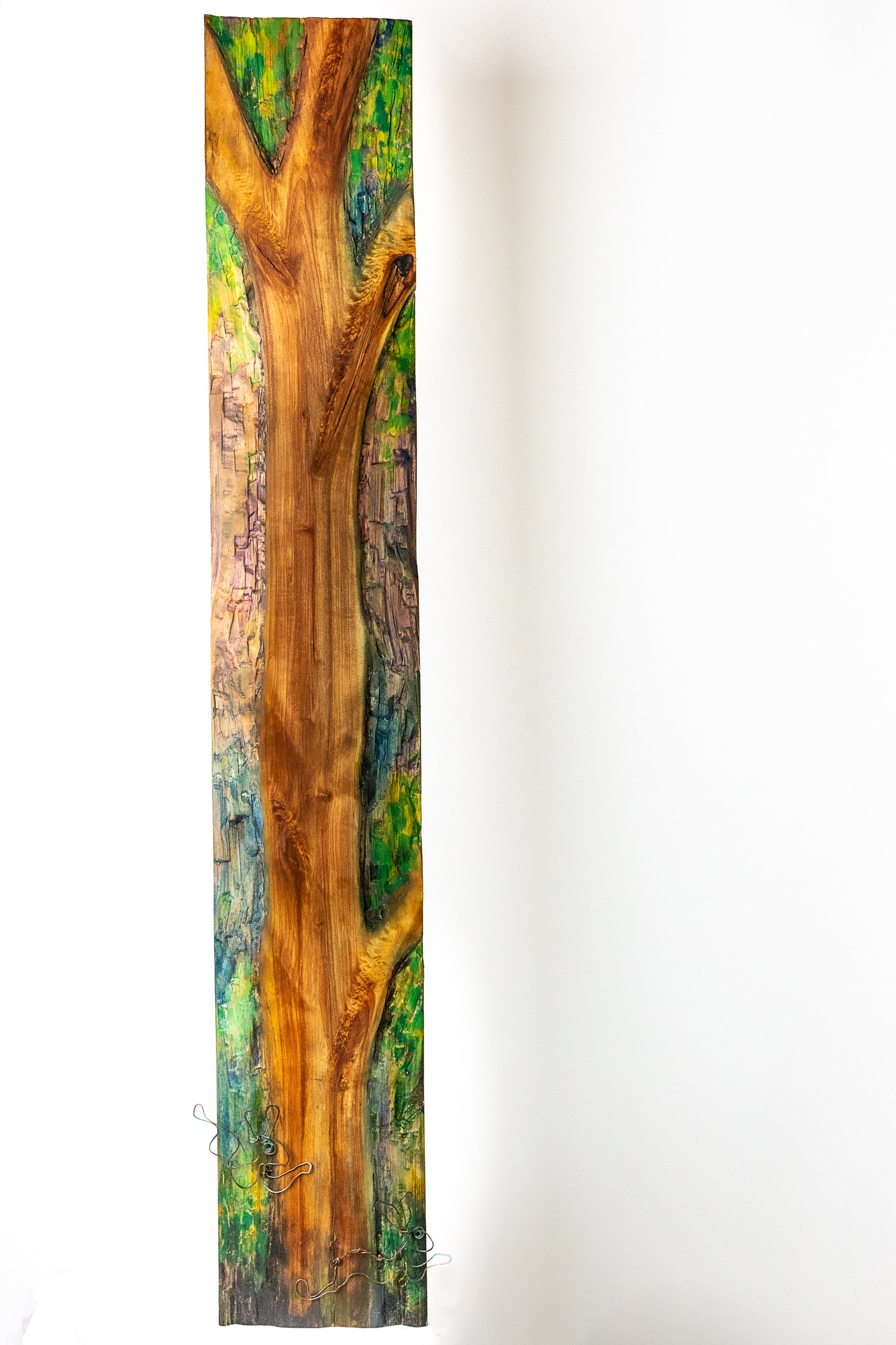
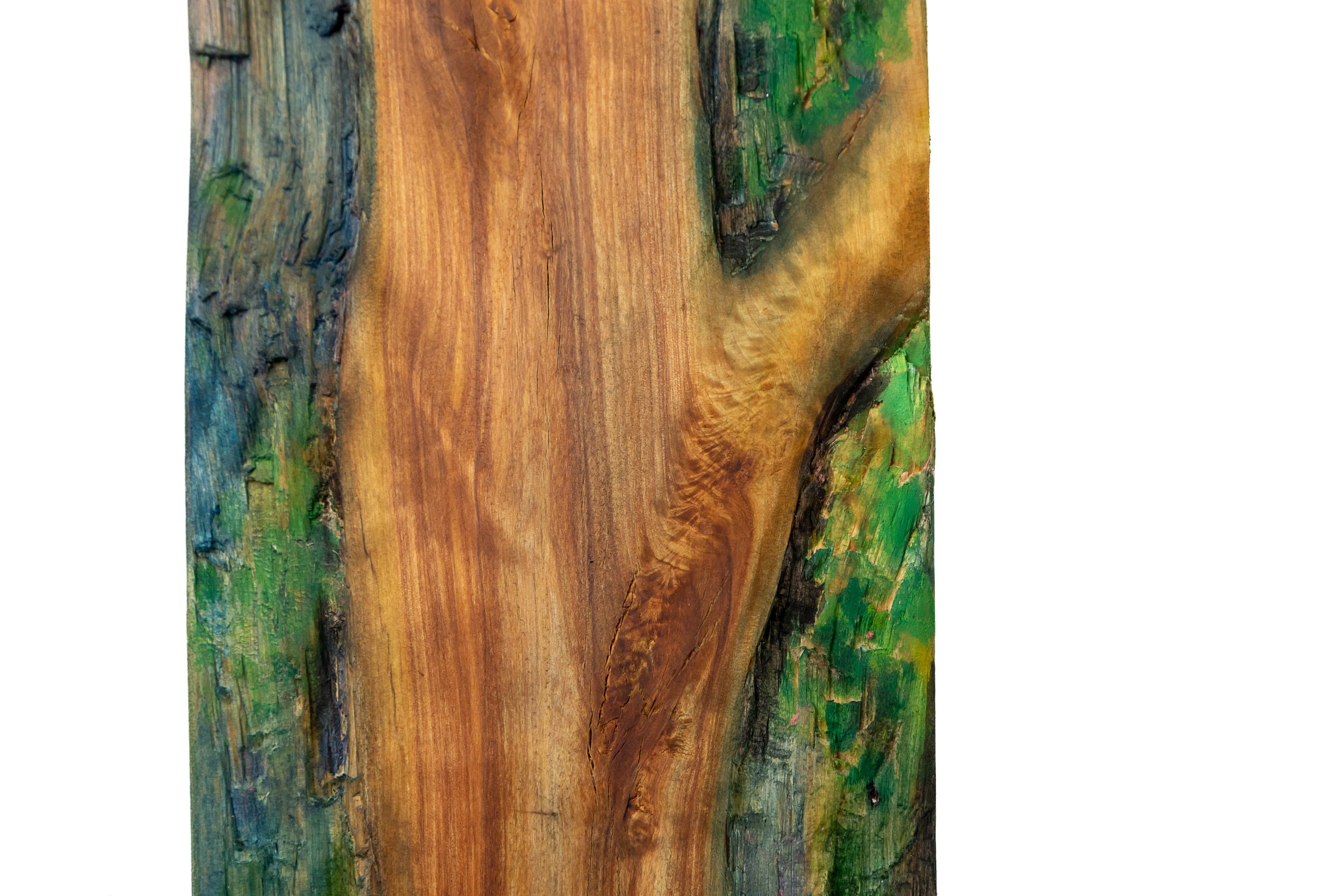
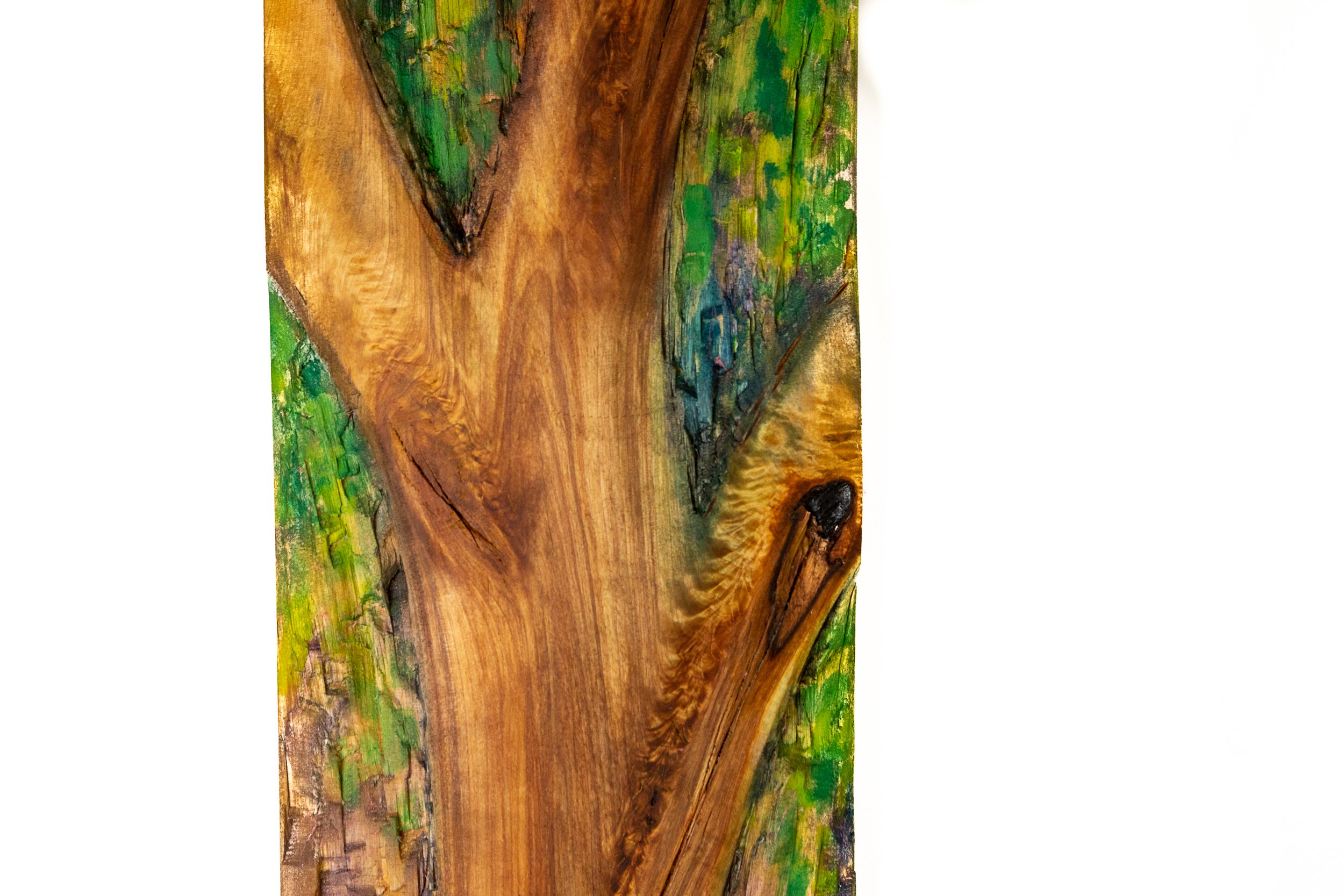
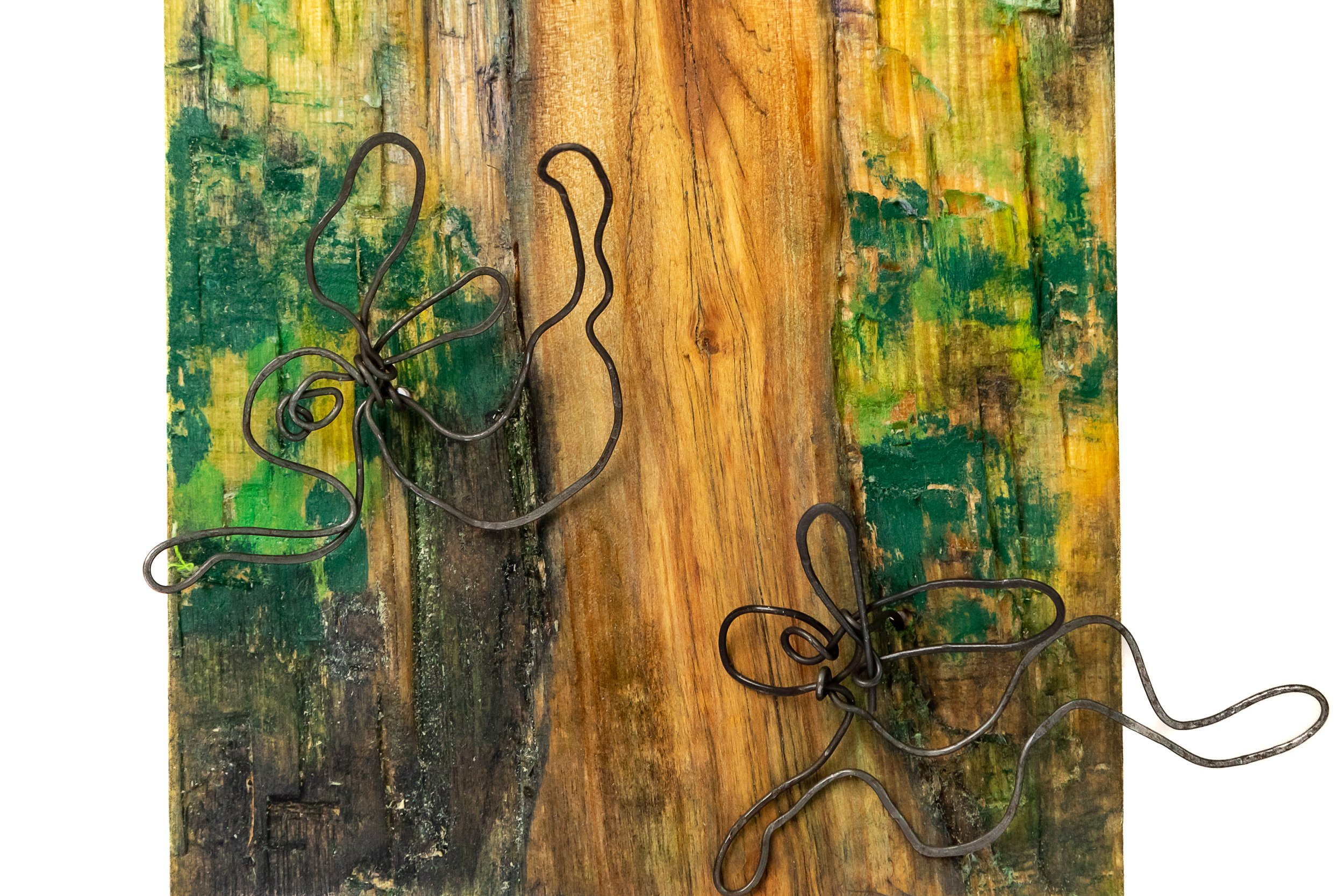

Bob Haverluck
Tree is a Promise of Rivers
Oak; 40”x10”.
I wanted to let the wood be, be beautiful. And not just because Dostoyevsky said: “Beauty will save the world.” Although I do believe passion for beauty will help.
I mean Beauty not as sweets to distract from our three alarm situation. I mean Beauty, the “fearful symmetry” of Wm Blake’s “Tyger, tyger, burning bright”. I mean the beauty that is not simply attraction but, in truth, is also frightening, and speaks of a kind of power and threat that makes it a “terrible beauty” (Yeats).
Like the Good that is much about, Beauty’s presence may subvert our capitulation to cynicism.
More exactly, our collusion with cynicism, with collusions’ little payoffs, ‘kickbacks’ leaving us with the comfortable illusion of just being left alone.
Like the Good, Beauty begins as a gift before calling us to task and tasks to respond in kind and kindnesses to the world. This makes it a pain in the ass of those like me who would remain sitting, entertained and distracted. For the existence of the Good and Beautiful speaks loudly of the good possibilities that can and need to be multiplied.
Can you see them in this sculpture? There in the heartwood see a host of tiny rivers where water flows with a green gravity skywards. There a tumult of juicy leafs make a waterfall falling upwards. Or is it a fountain?
Each tree is a fountain conspiring with other trees to make Rivers. Rivers who in turn will nurture the awful wonder which is every forest with rabbits and all. Ain’t that beautiful and good?
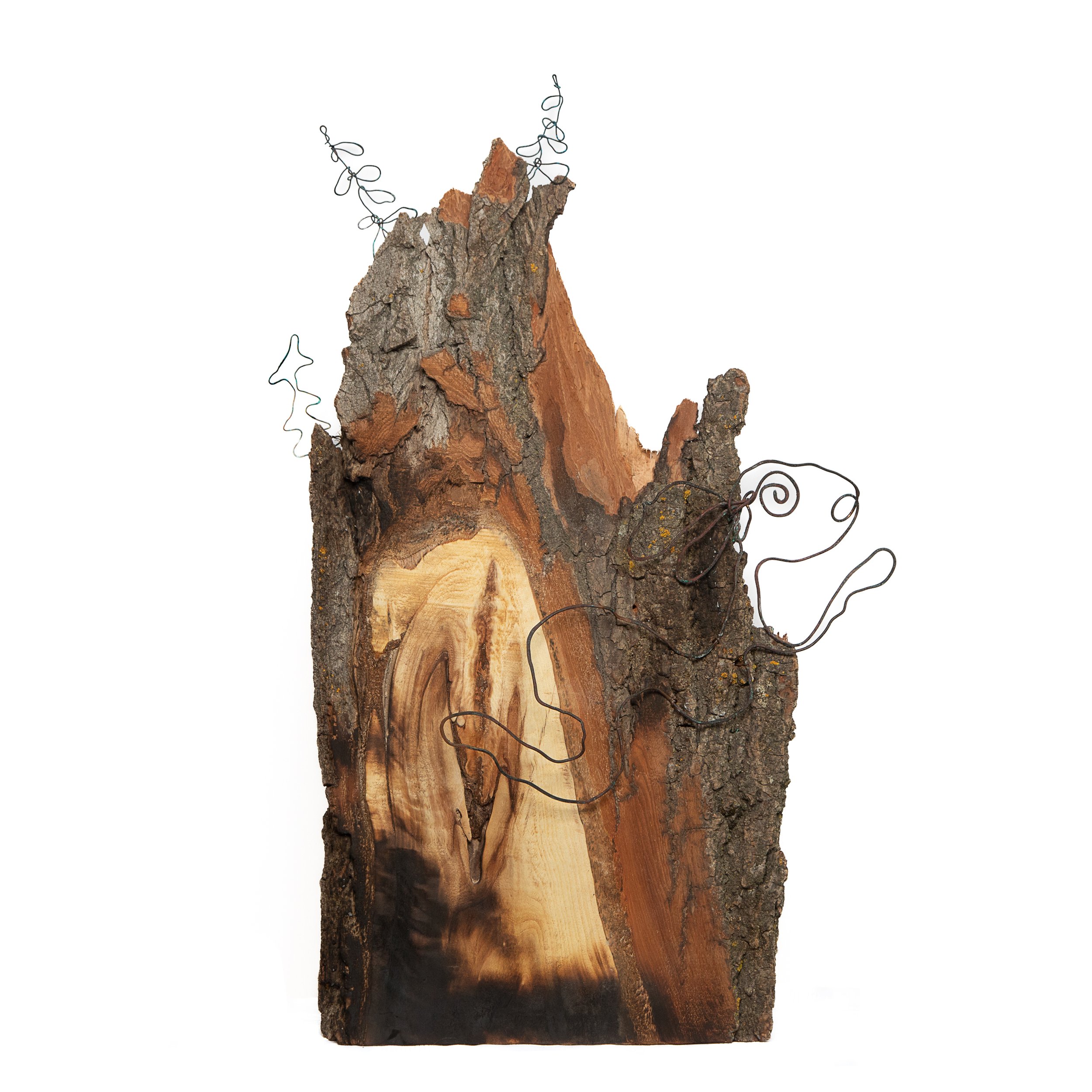
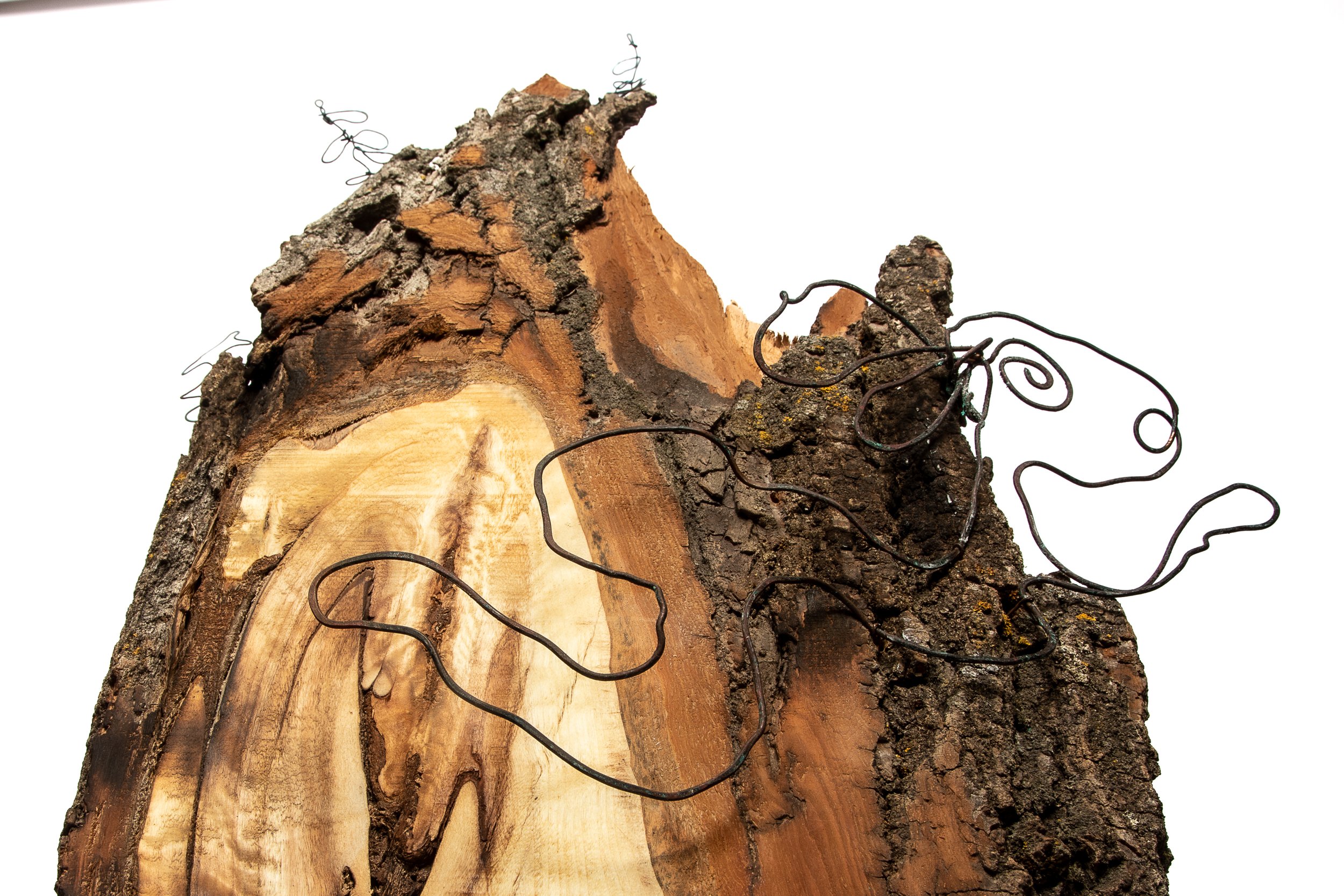
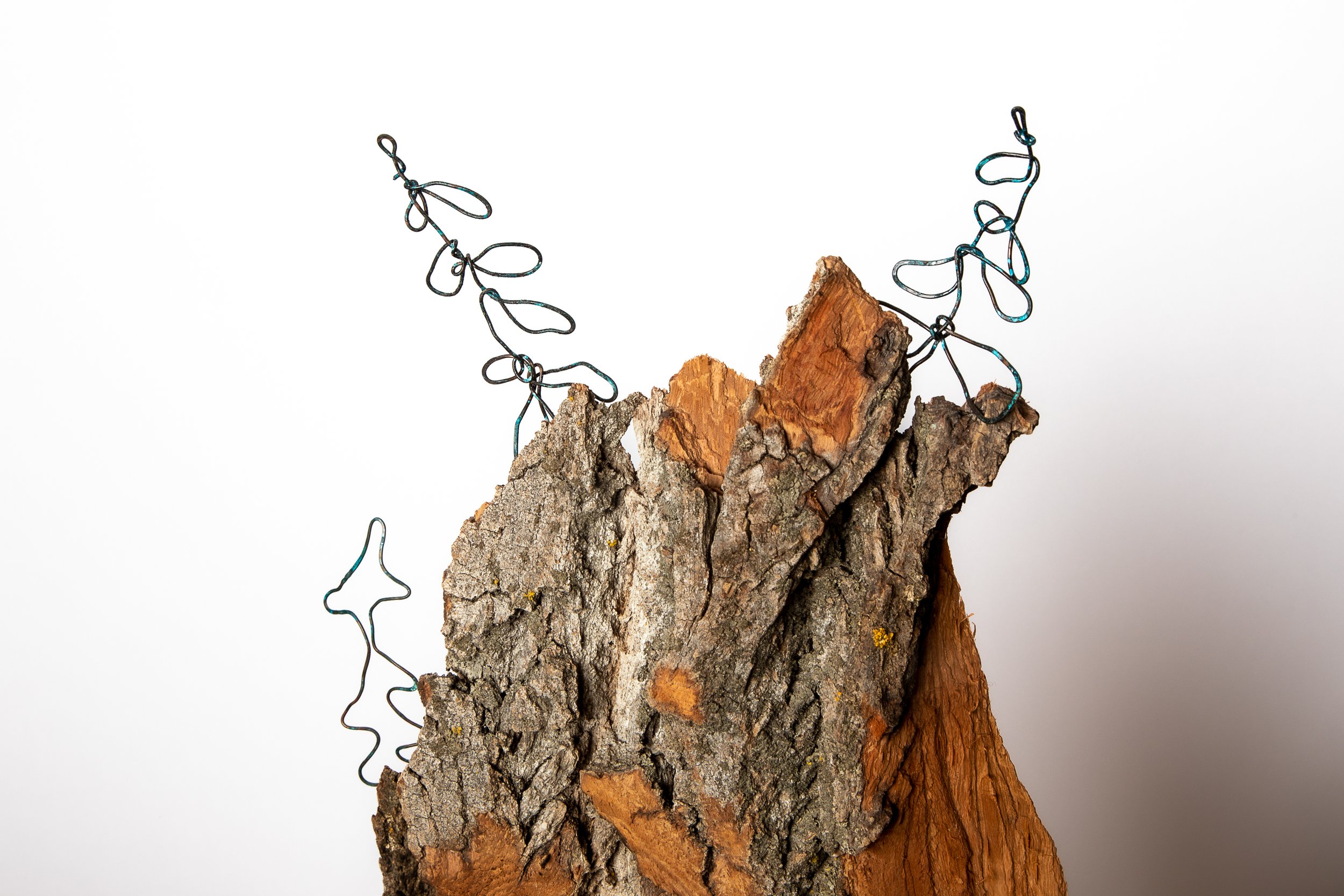
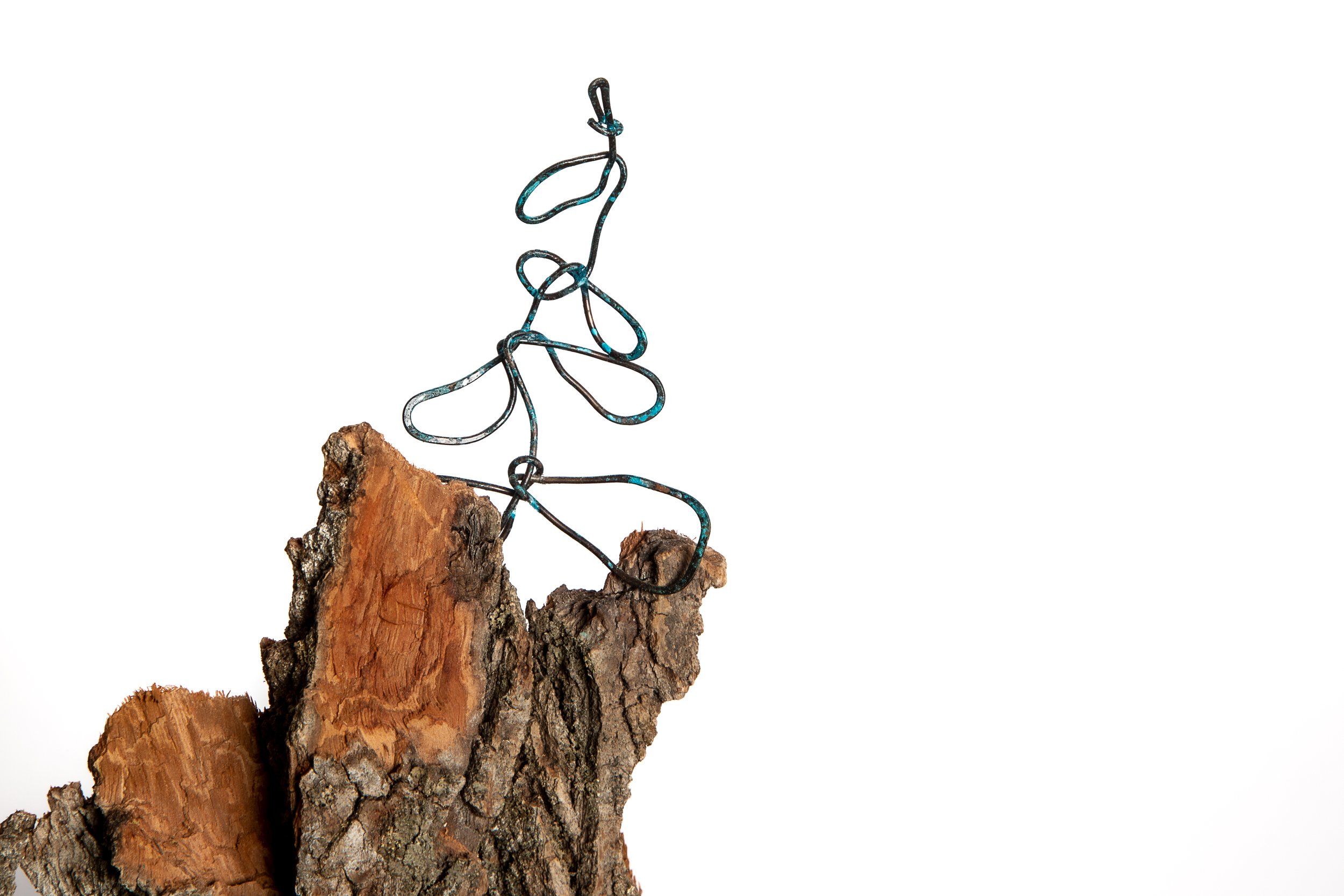
Bob Haverluck
Fleeing the Wildfire
Oak, hammered patinated copper wire, fire, walnut oil; 30”x18”.
The wildfires scattered throughout British Columbia, summer of 2021 sparked this brooding. Maybe this piece of oak slab signed by fire can say ‘ragged mountainside’. And maybe, with hammered wire we can feelingly see a particular creature, an ‘individual’ Rabbit. This before Rabbit becomes a representative of every terrified creature running from the fire. And before my anthropocentric imagination begin seeing myself, ourselves, in Rabbit. In this case that may be a good thing if it helps us take seriously the news bulletins from sister Mother Nature.
Maybe this serious play can help give some “sens” , meaning and direction to the shapeless anxiety, a rising bile in our heart’s gut. Such is a central purpose of the artist and their art, as philosopher R.G. Collingwood argued on the eve of the Second World War, 1938:
… what he has to utter is not, as the
individualistic theory of art would have us
think, his own secrets. As a spokesman of his
Community, the secrets he must utter are
their’s. The reason why they need the artist
is that no community altogether knows it’s
own heart; and by failing in this knowledge
a community deceives itself on the one
subject concerning which ignorance means
death. For the evils which come from that
ignorance, the poet … suggests no remedy,
because the poet has already given one. The
remedy is the poem itself. Art is the
community’s medicine for the worst disease
of mind, the corruption of consciousness.
Perhaps, we who host our society’s “consciousness” … and unconscious may hear something in this shout of wood and wire.
Canada’s rivers drain to three oceans, with more than 60% of Canada’s waters draining north in large rivers traversing vast and diverse climatic and geomorphological landscapes. This creates considerable natural complexity and diversity to our landscape, and to the understanding of changes in Canadian hydrology and water supply. Compounding this complexity is the impact of river regulation which impounds, controls and alters the natural drainage of these large river system so they can be harnessed for hydropower production. Though hydropower presents an opportunity for Green Energy production in Canada, it can also have significant effects on these otherwise wild, turbulent and untamed northern rivers.
The focus of our art project is the Nelson River system which drains 1.1 million km2 of Canada’s continental interior, and which has been subjected to intensifying hydropower development since the 1970’s, impacting the local first nations, the ecosystem, and the natural flow of the river.
Comparison of regulated and naturalized (under the same climate but as if regulation never existed) Nelson River flows can be compared, as well as climate impacted river flows, through an interfaced developed as part of a European Union funded climate data visualization showcase (GWF IMPC Theme A6).
Find out more about the science here.
The imagined ideal collaboration would have allowed for us to have spend time together on a site or two along one of the northern rivers. There I might have been alongside as you and your team made observations. And there we might have been in conversation about the pushes and pulls at play in a particular setting , or two or three. Between the time line that we were given and the Covid constrictions, restrictions such ideal interplay was not possible.
“However, given my years of working with communities affected by hydro development along the Churchill and Nelson Rivers , with time spent there and elsewhere in the shield with similar geography and resource development dynamics did allow us to join thru our backgrounds. As well, your photo documentation offered vivid images of some of your terrain / work areas led me to shared kinds of places enough to help nurture the artistic imagination. Besides this our conversations about our shared sense of these places and forces at play was integral to helping launch and inform the artworks that have emerged.” - Bob Haverluck
“Intimidating is how I would describe my initial thoughts coming into this collaboration. What do I know about art? How can I contribute to this project? These fears were quickly put to rest after chatting with Bob in our initial project meeting. Bob is a kind and generous listener who is genuinely curious about the natural environment, waters, and people around him. He is a keen observer of all things, and this is reflected in the intricacy and subtleties of his art and descriptive story telling. Nearing the end of our collaboration I still have no idea what to expect for our final piece and I am more than OK with that - I love the intrigue this fosters. I am confident our interactions will be reflected in this piece, and that I will love its message and medium. Bob is careful and thoughtful about his choices of materials - everything tells a story in this piece. I am grateful to have been a part of the process, and to have observed (from the inside) the process of Bob’s creation, with some input based from science, but also informed by the piece’s natural materials and way of being. One of my favourite quotes from Bob is ‘Art’s task, in part, is to engage the tragic and comic boundaries of human existence; to help negotiate the boundary waters and all the flow between them.’ There is so much power in using Art as an expression of this science.” - Trish Stadnyk
Bob Haverluck is a storyteller, cartoonist, theologian who lives on the bank of the Red River on its way Hudson Bay. Underlying his work is the question “How might feathered and featherless, hairy and hairless, flippered and two footed meet, really meet?” The answer his love labours wager on is the great and ancient near forgotten Peace Treaty tween all the Creatures, sister Mother Earth and the Creator. Bob is a “mentor” with the Trudeau Foundation working with emerging young scholars to bridge the Academy to the Street. His most recent books include “WHEN GOD WAS FLESH AND WILD: Stories in Defence of the Earth” (2017) with 55 drawings, and the forthcoming joint work with Kathleen Dean Moore “TAKE HEART: Encouragement for Earth’s Weary Lovers”, book of 25 short essays and drawings.
Trish Stadnyk is an Associate Professor and Tier II Canada Research Chair at the University of Calgary. She is a hydrologist and hydrologic modeller specializing in continental water supply under changing climates and affected by human regulation impacts. She specializes in using integrated modelling approaches, specifically incorporating hydrologic tracers (isotopes, or fingerprints of water) and temperature to improve regional hydrologic process detection, diagnosis of change, and model evaluation and uncertainty quantification. Over the past decade, she has worked with industry on short-term operational flood forecasting, and long-term water supply projections under climate change, including hydrologic inflows for infrastructure design. You can connect with Trish on Twitter @h2obabyts or on LinkedIn. You can view Trish’s scientific articles here.
Contact Us!
Want to share your comments, questions or perspectives on this gallery and the themes explored? Please Contact Us!
The Virtual Water Gallery team is committed to providing a safe, respectful, harassment-free, and accessible space for all. We do not tolerate harassment of any member of society.
